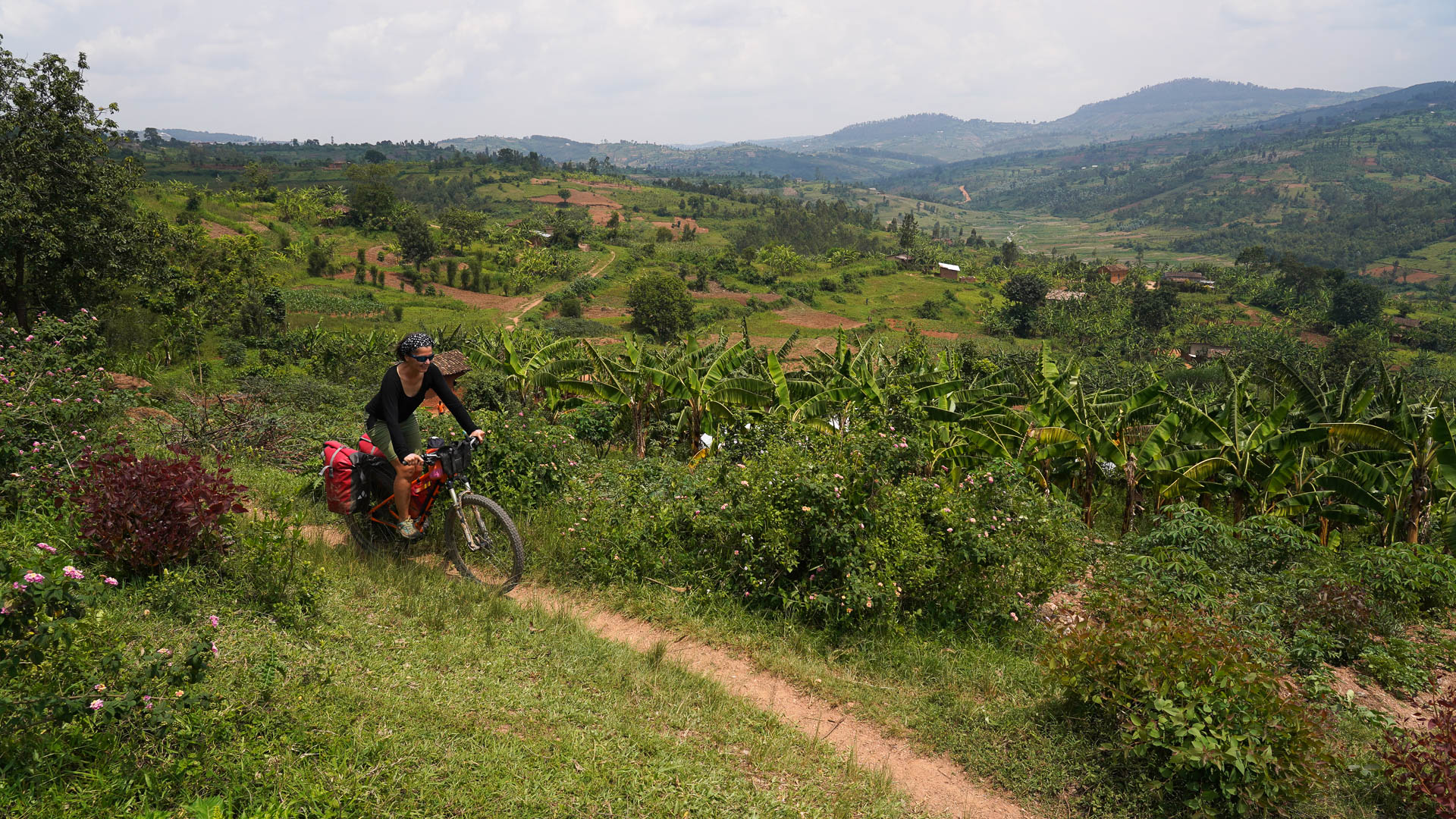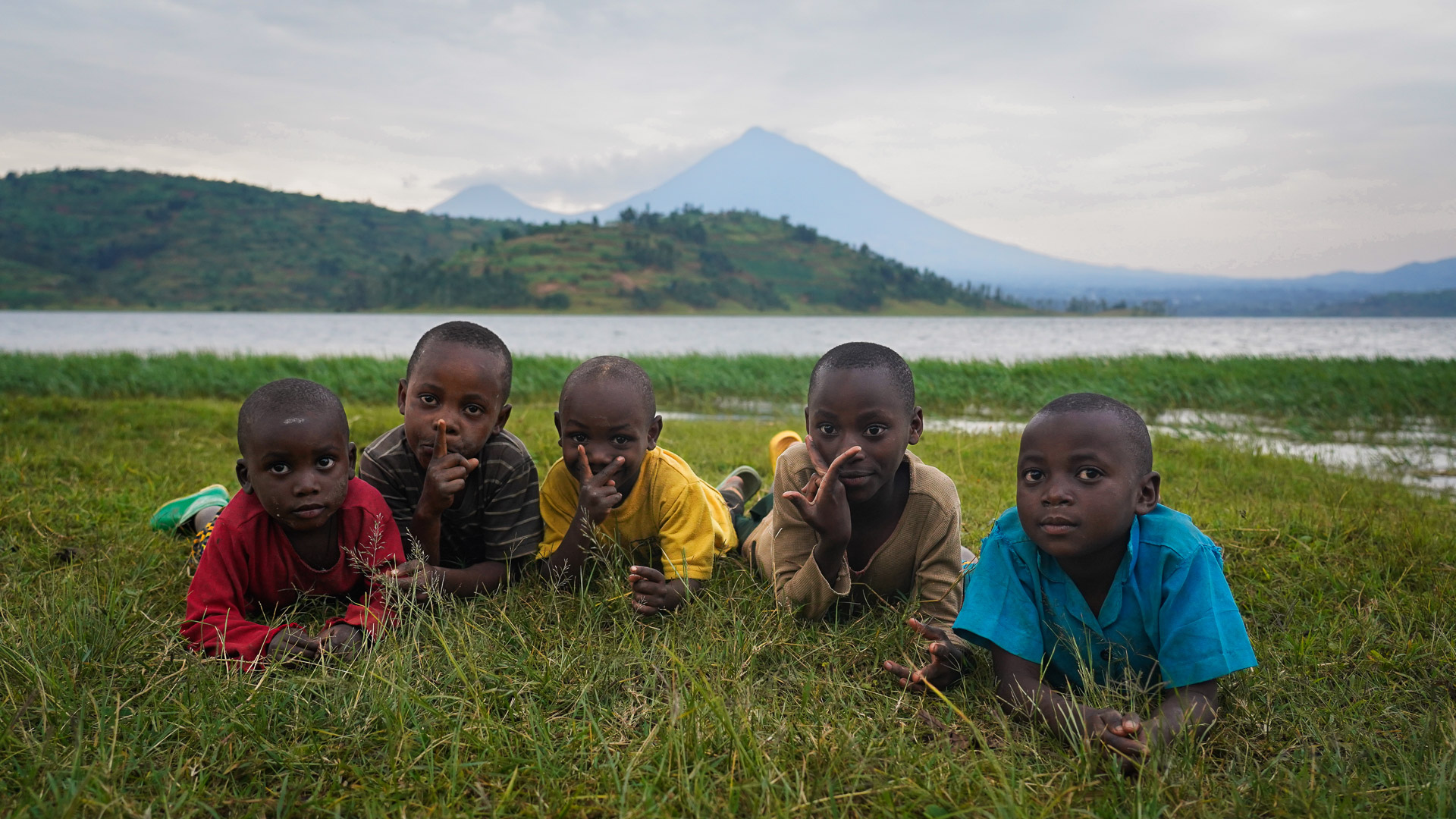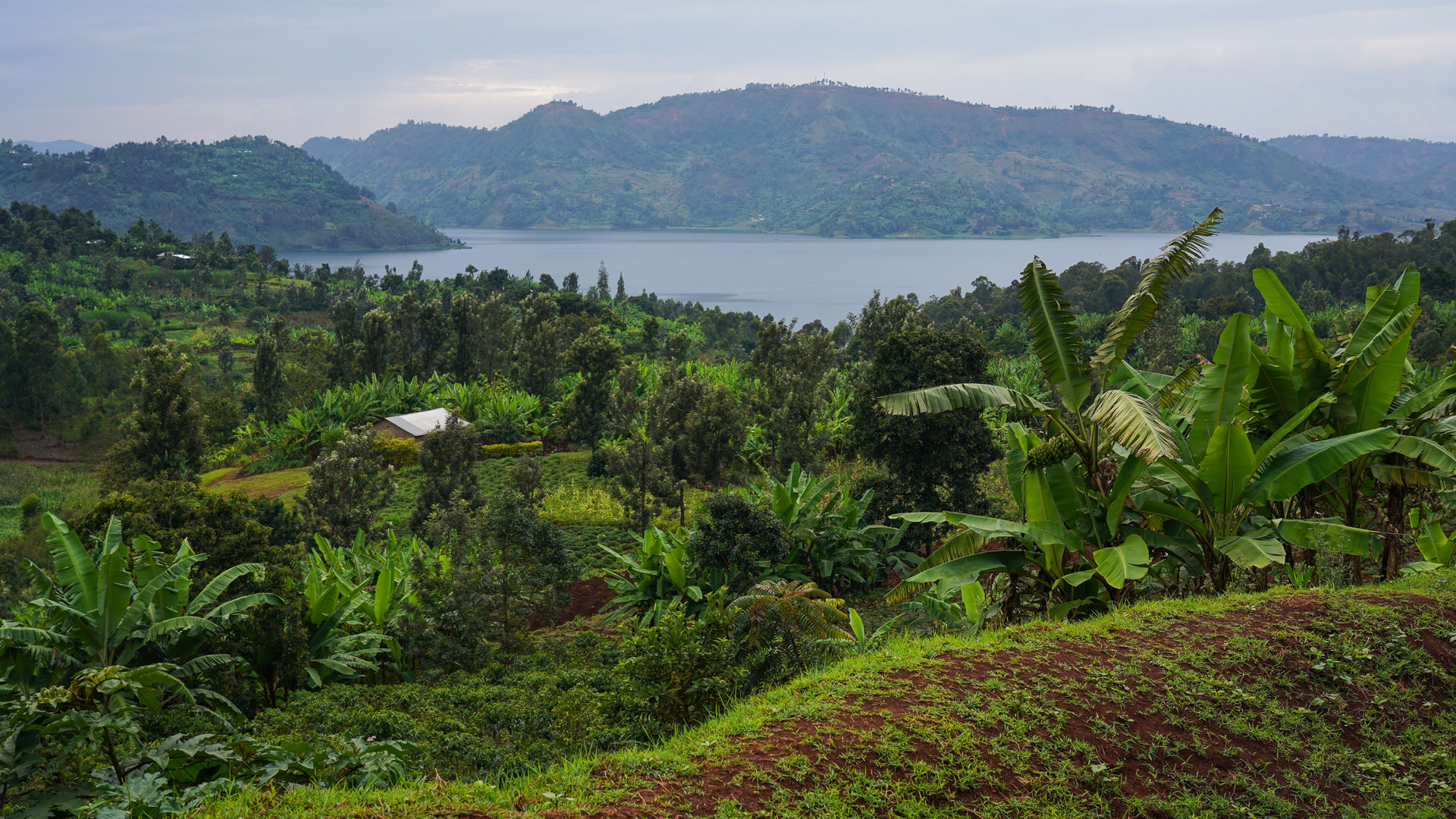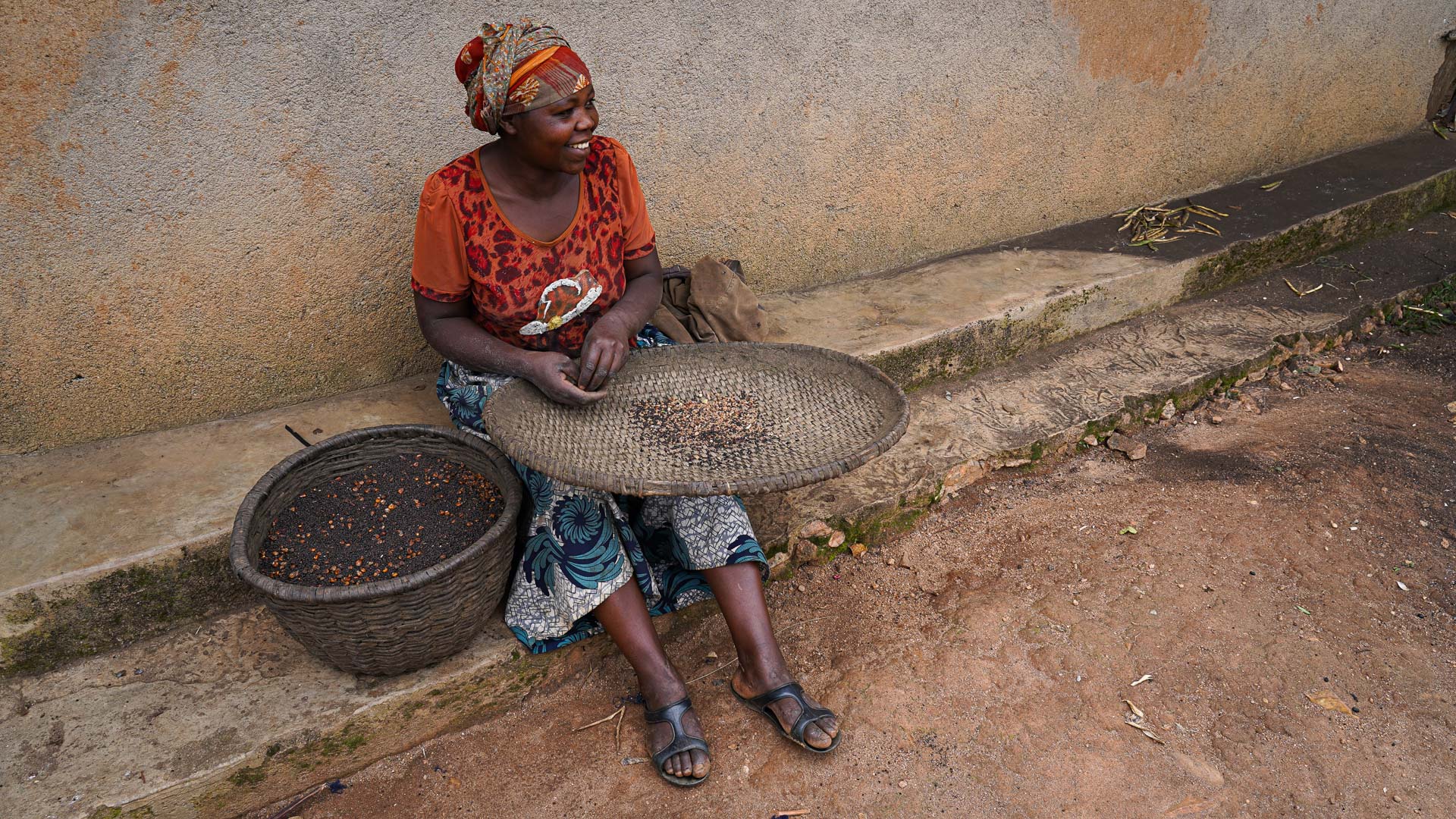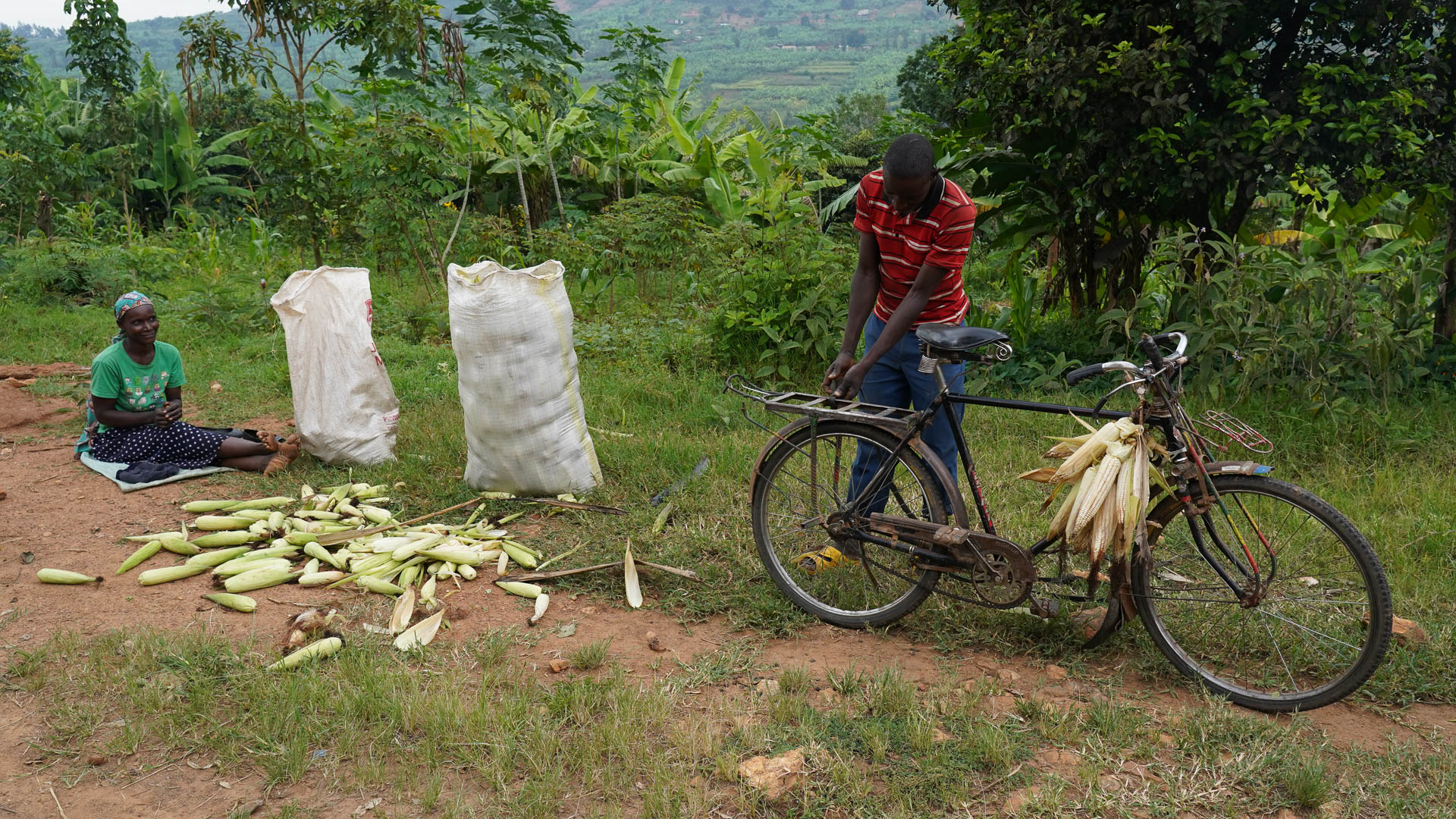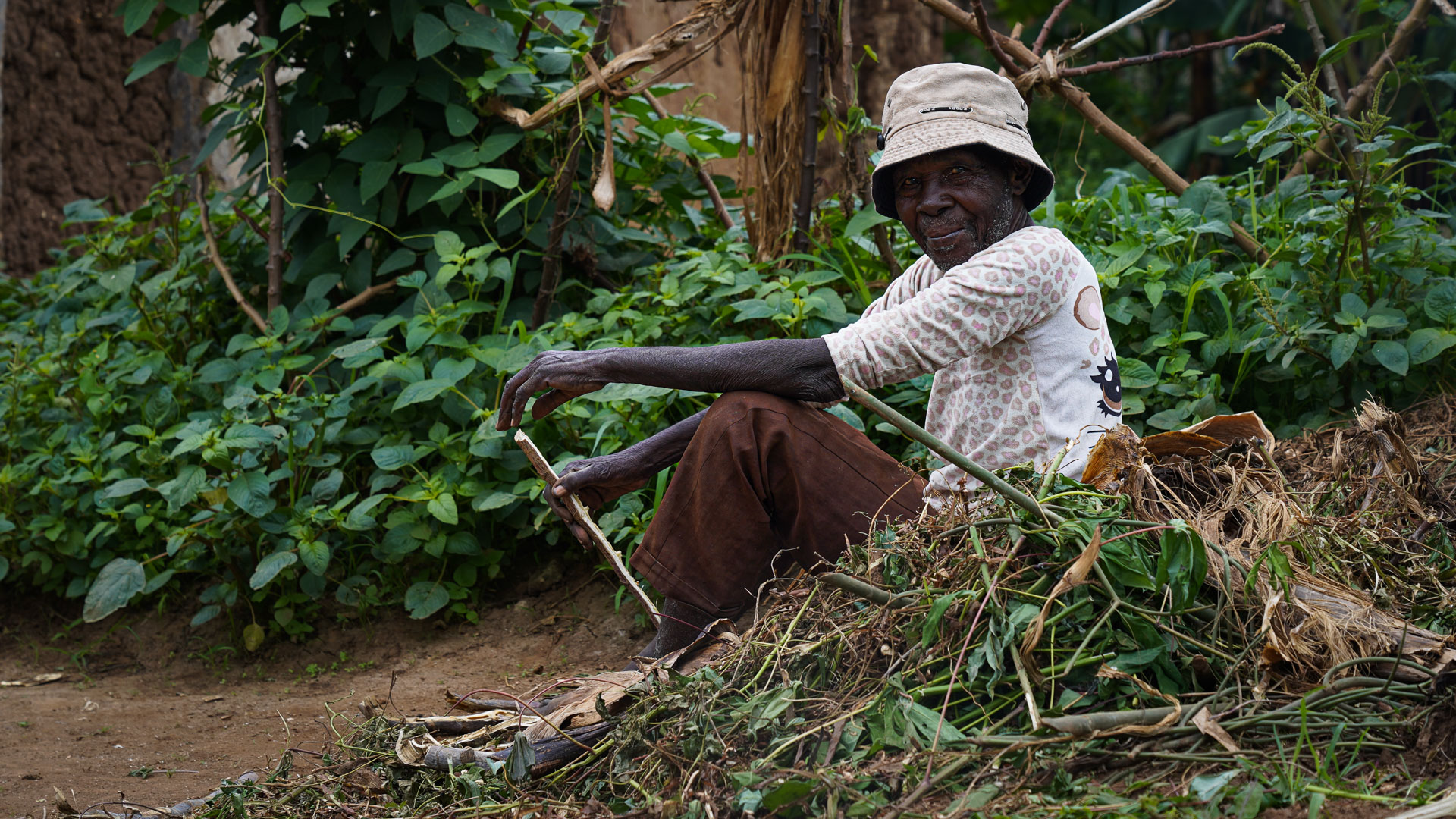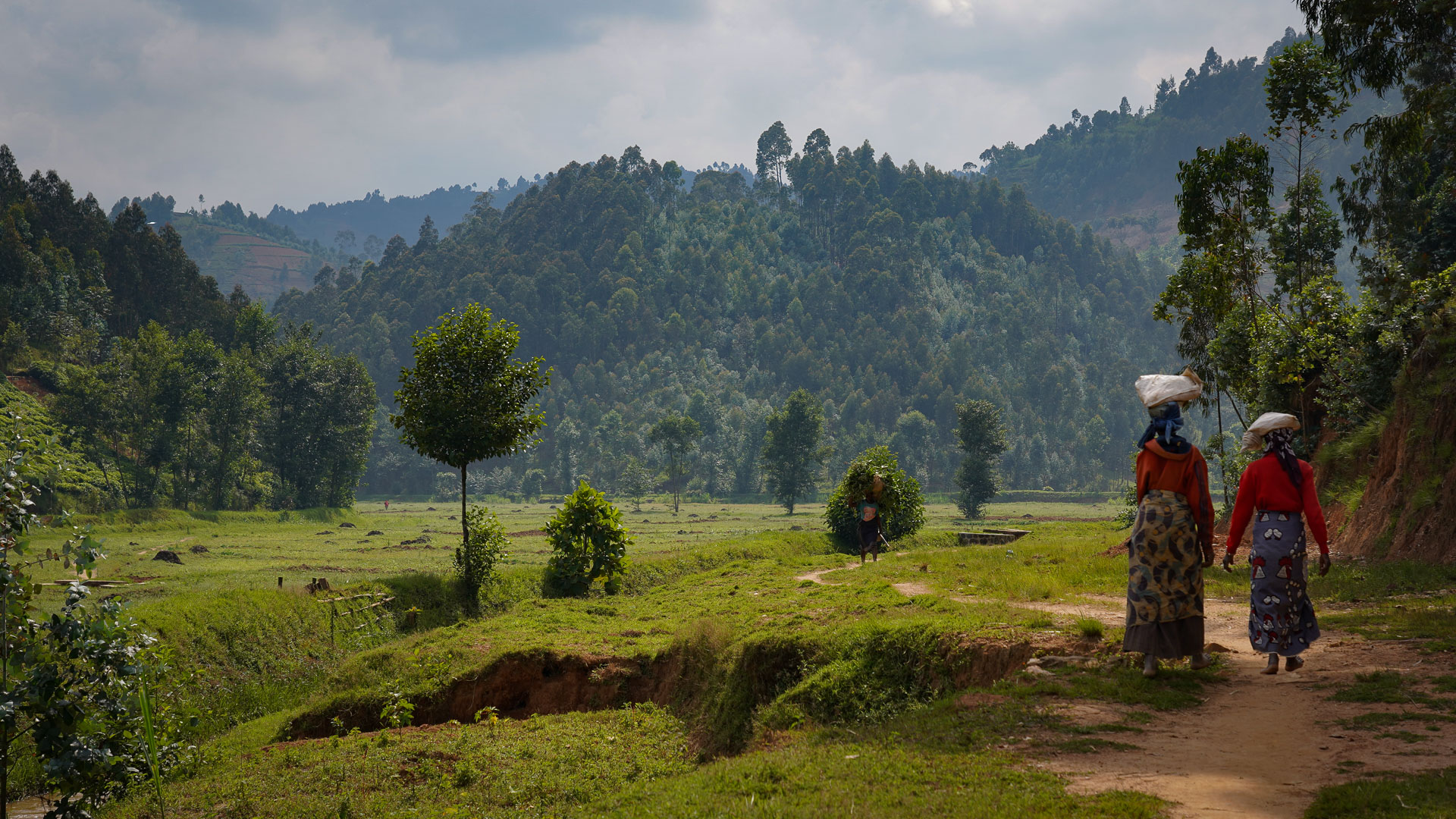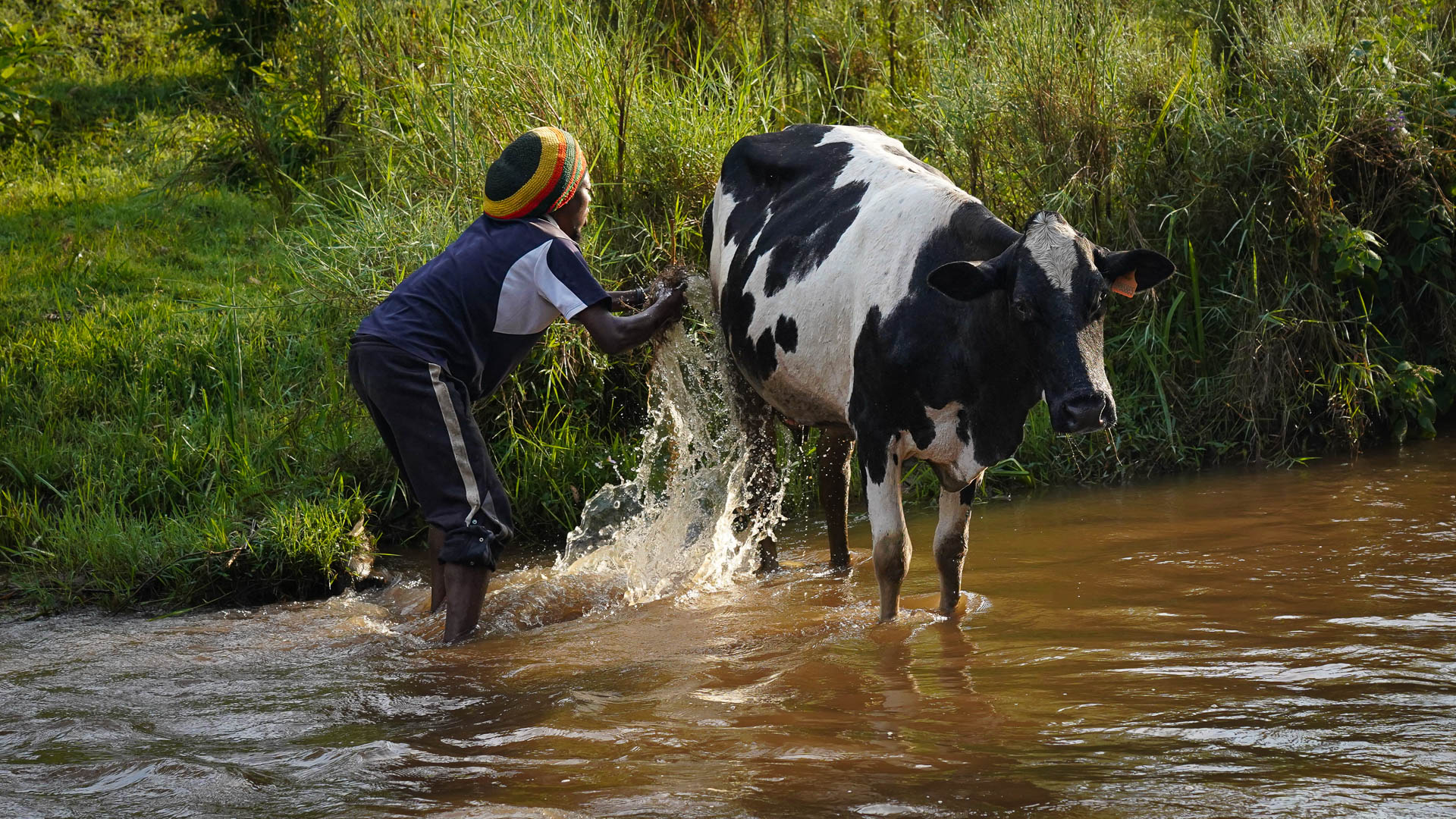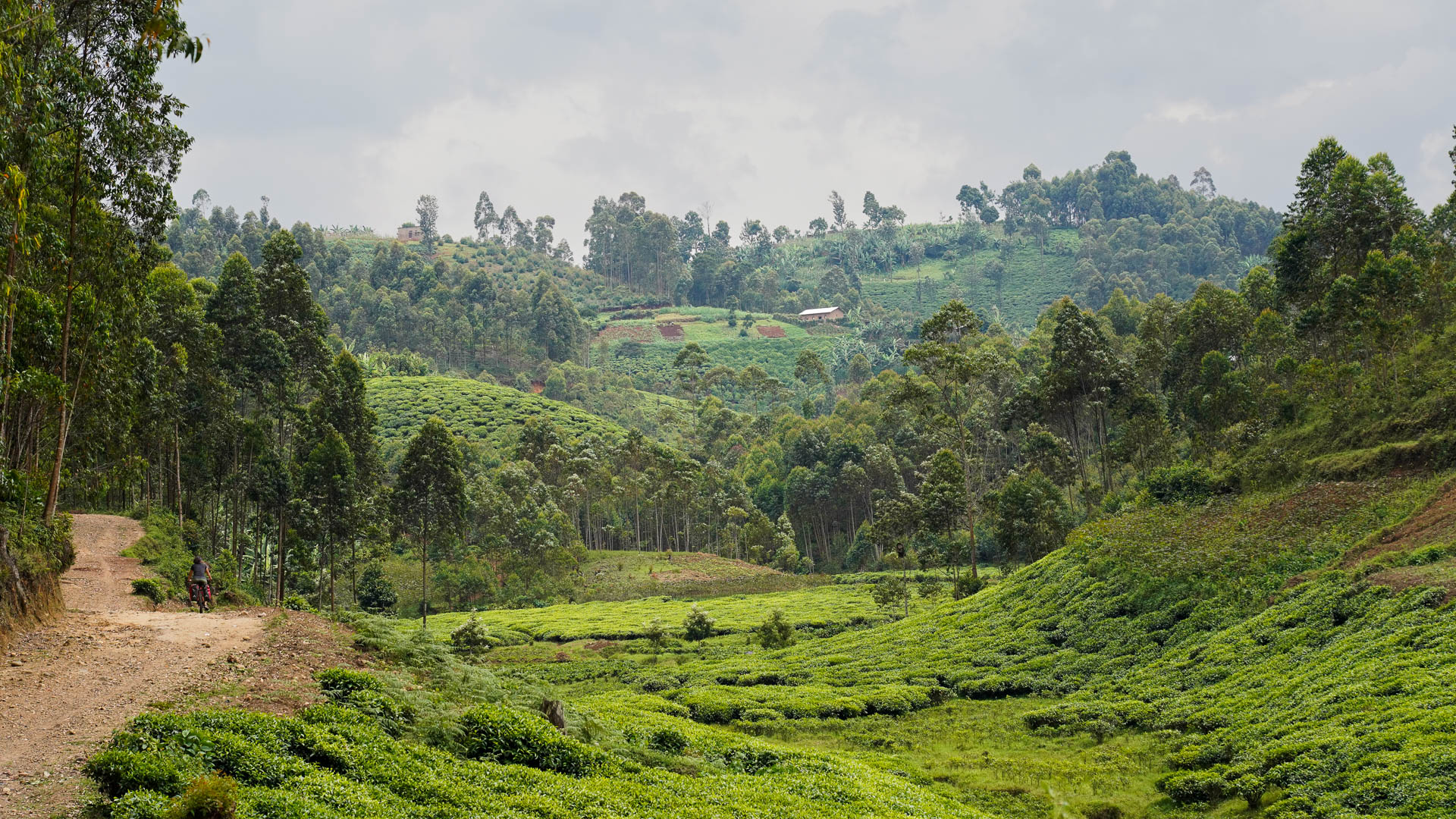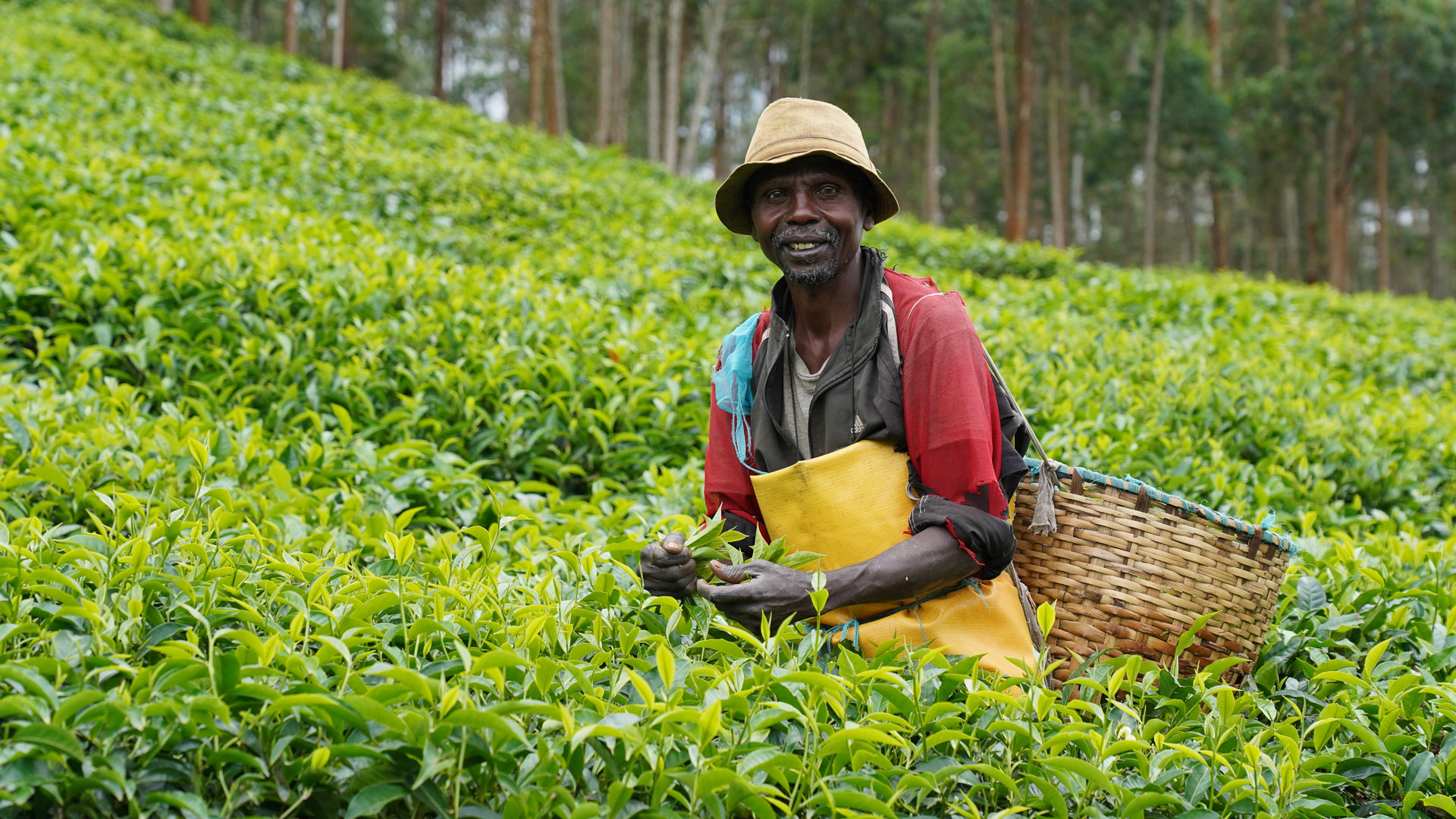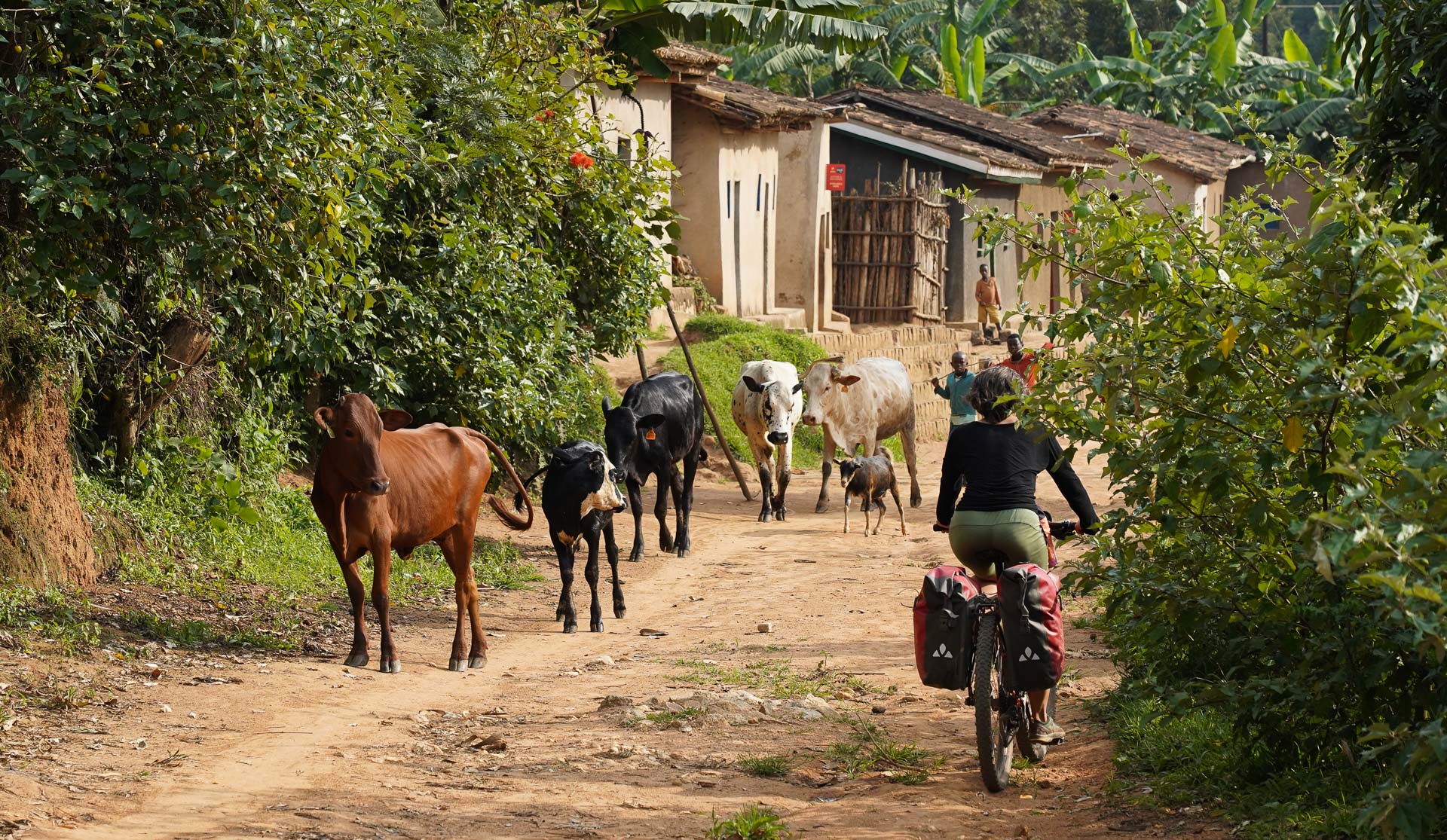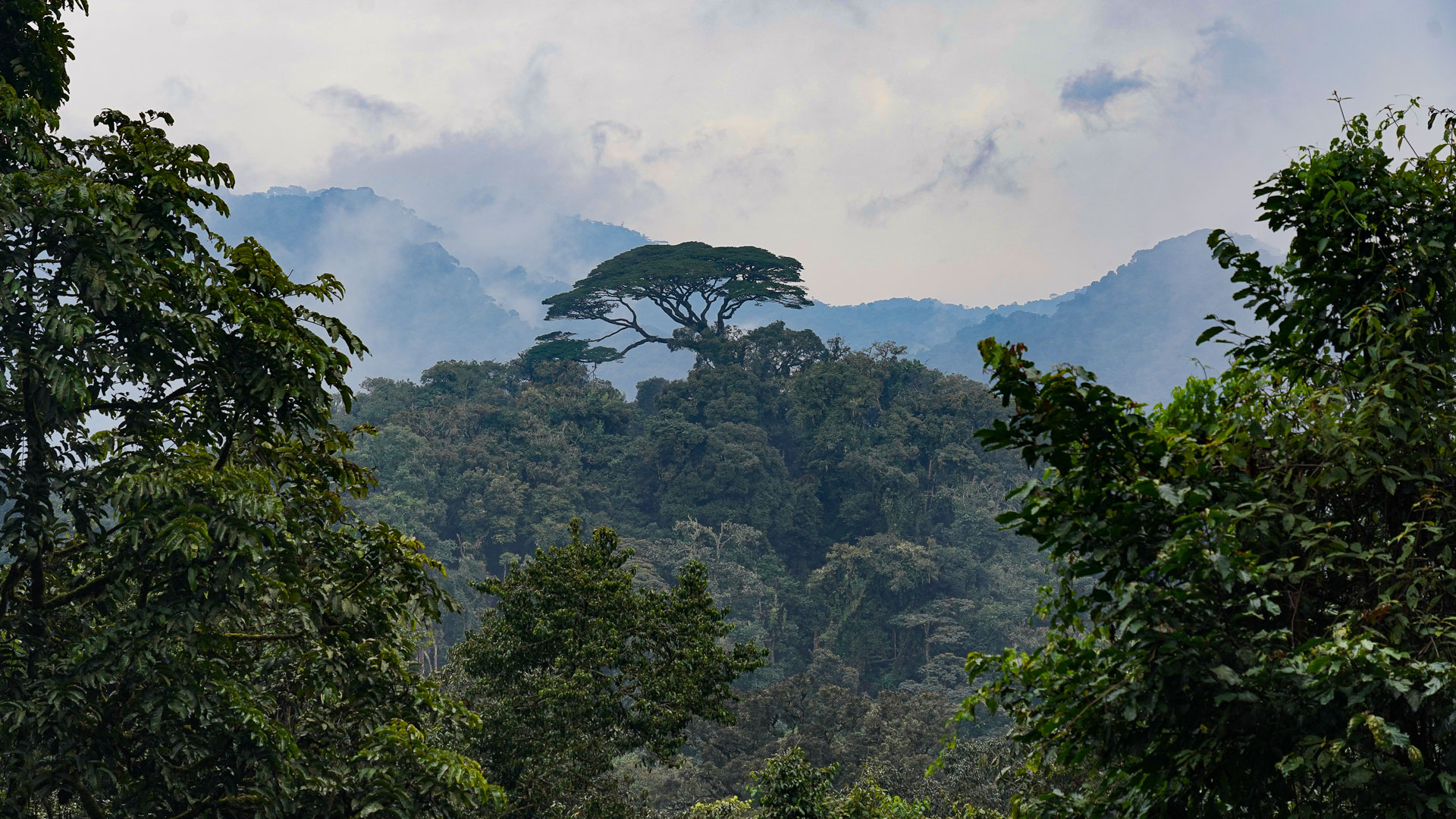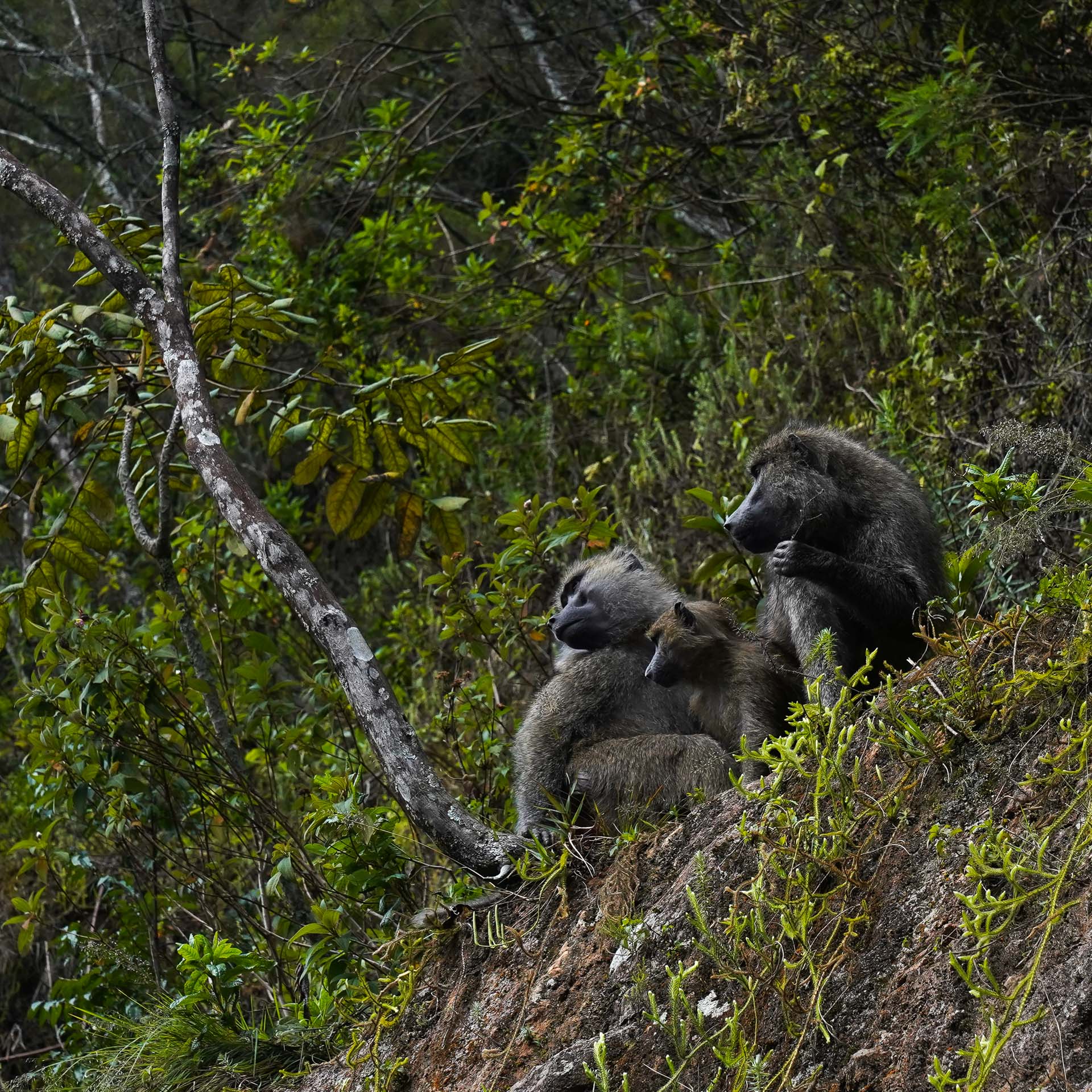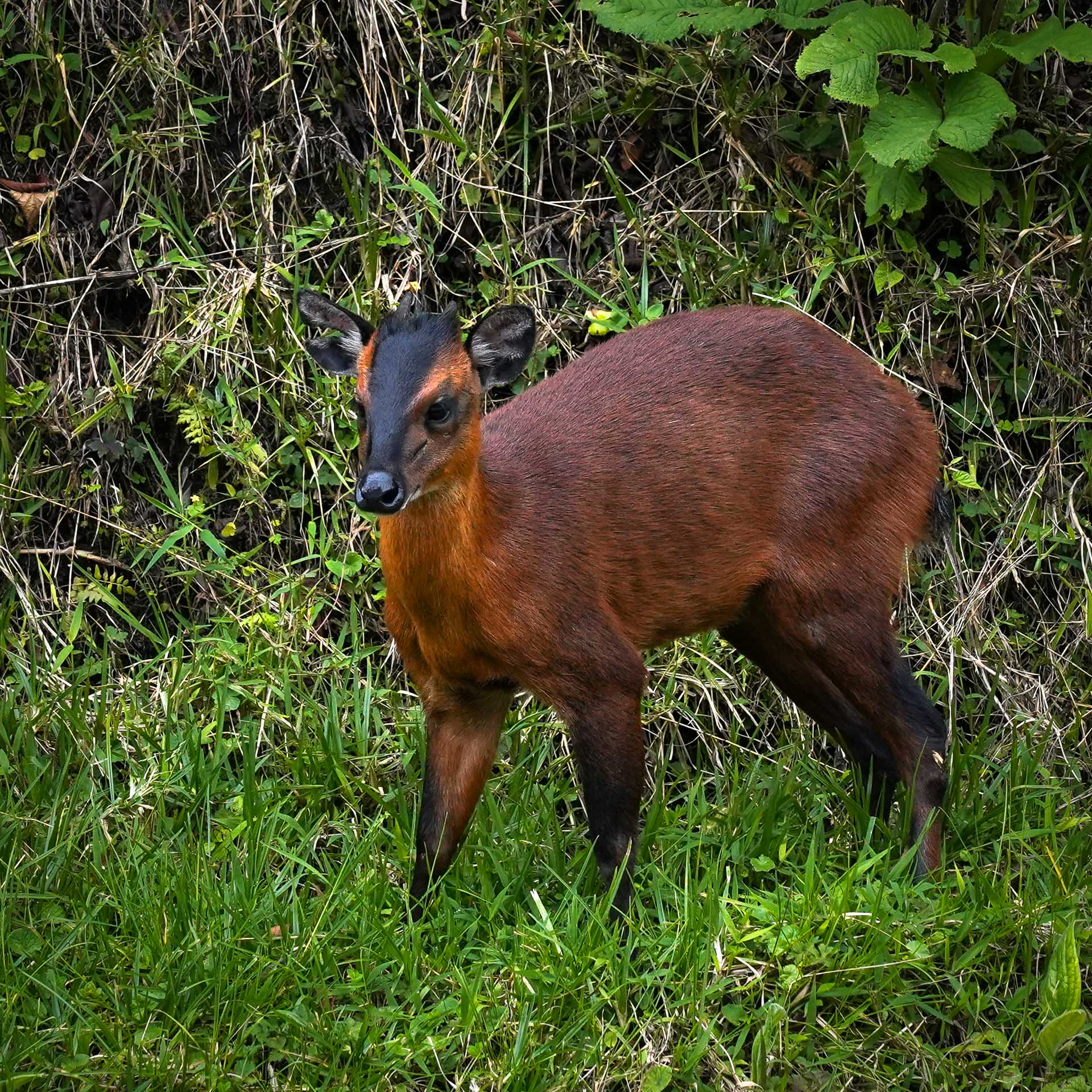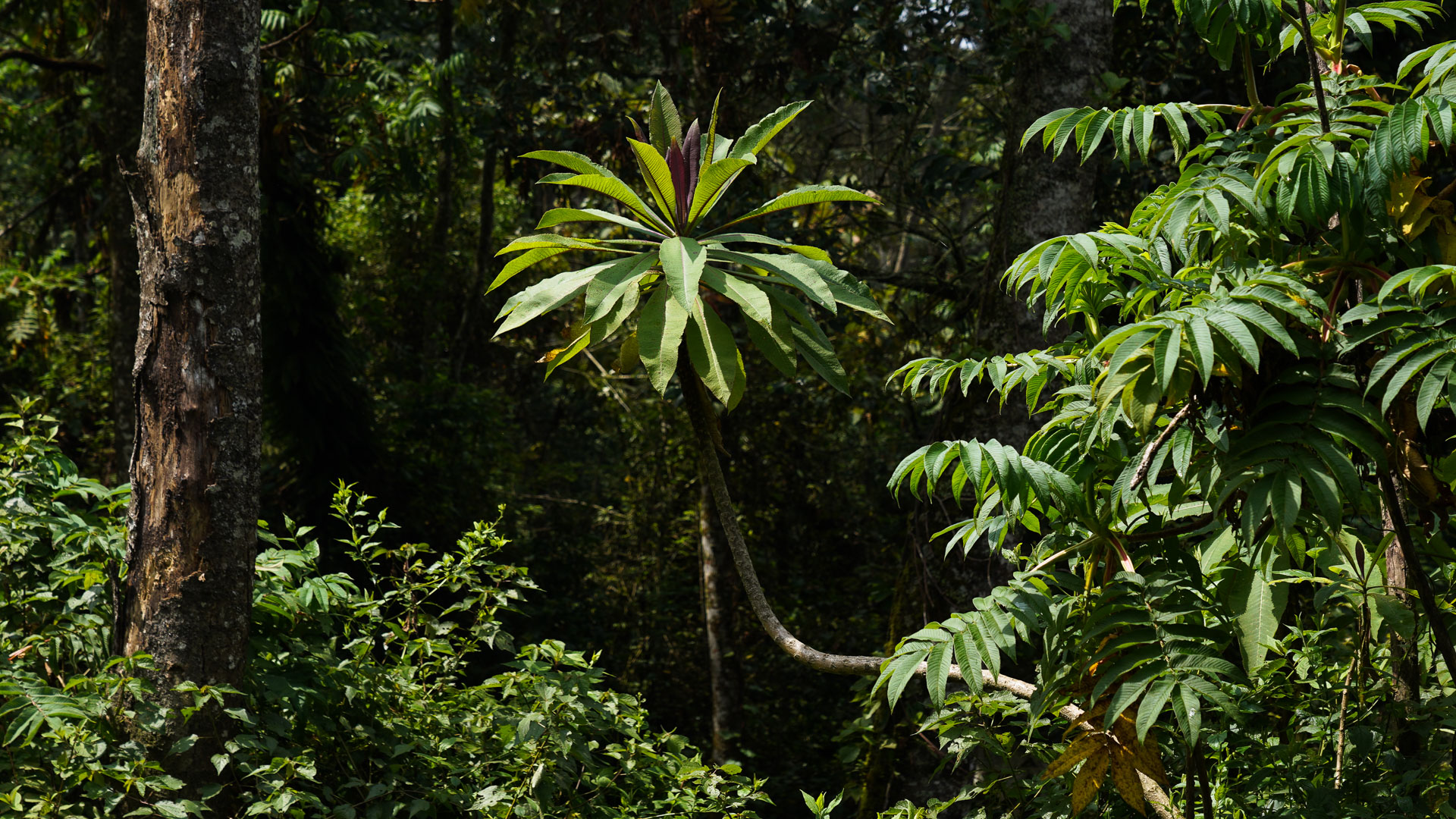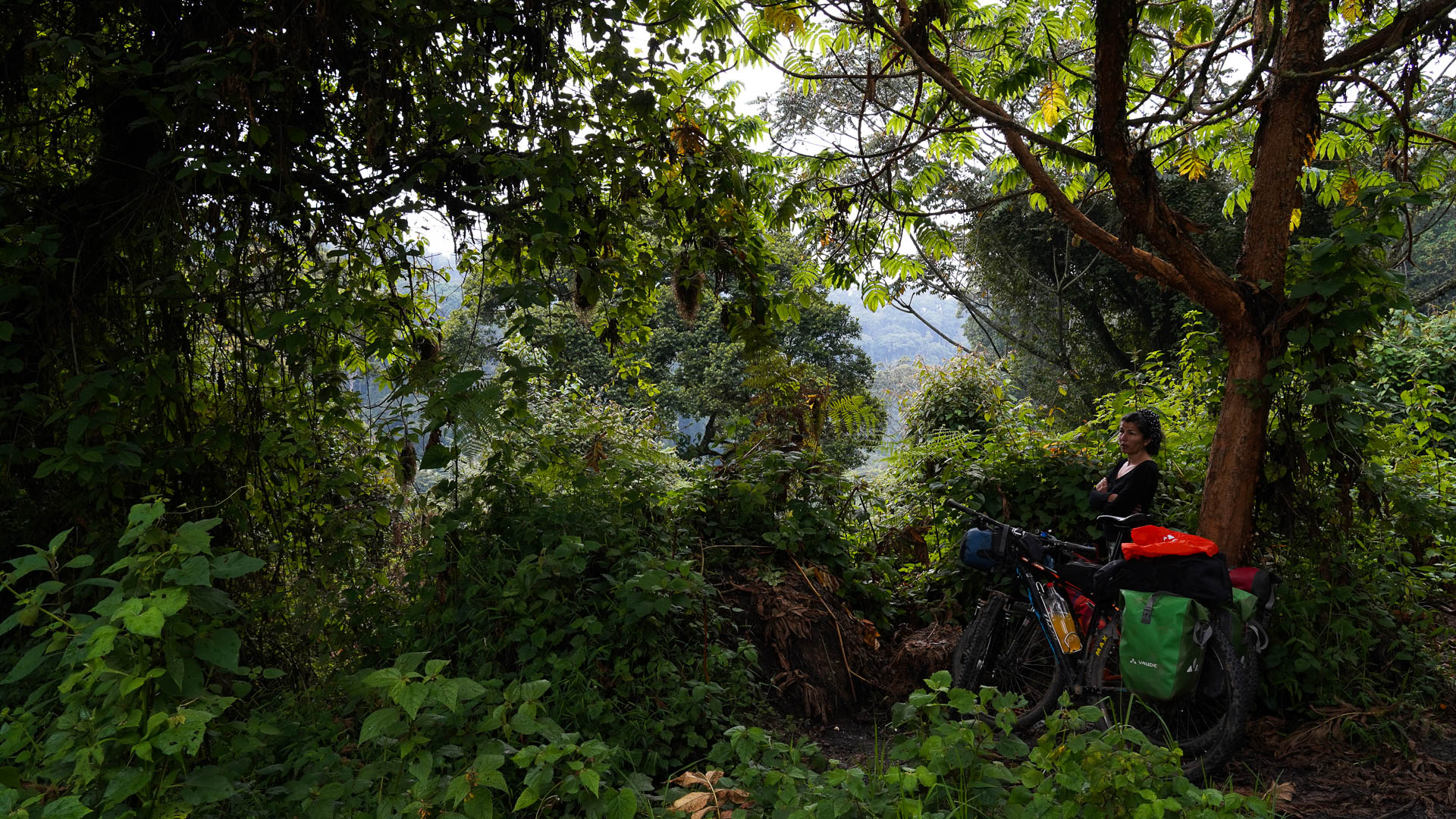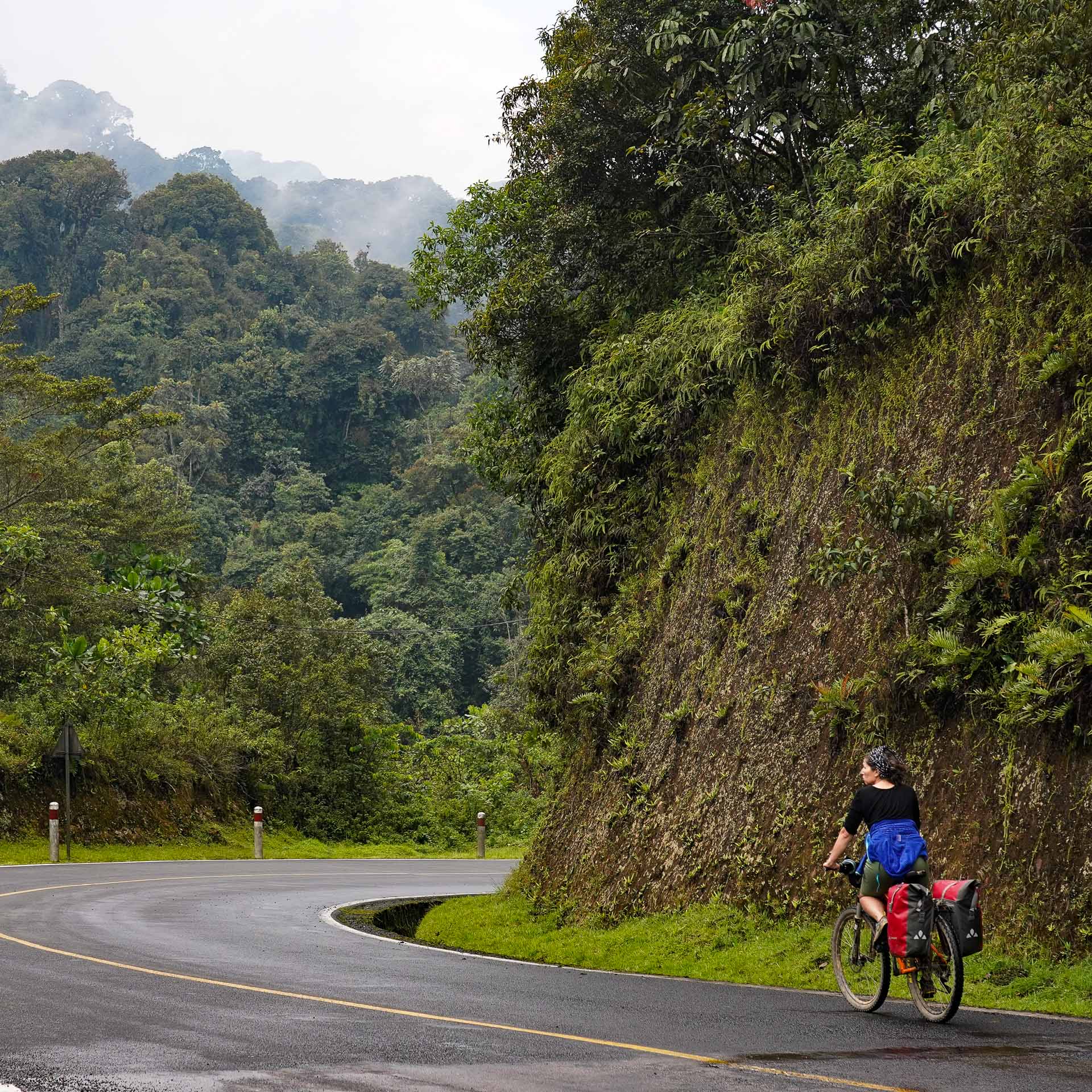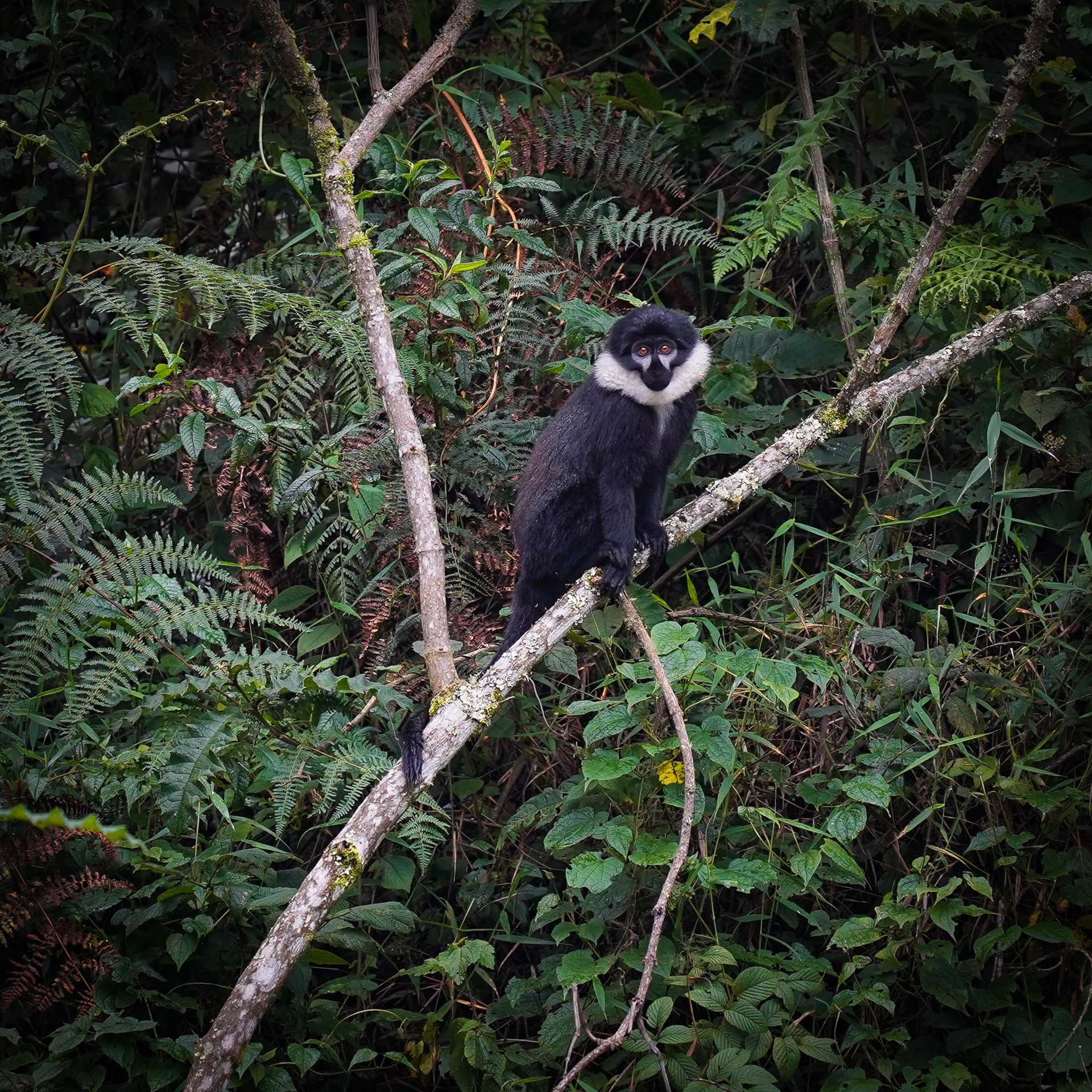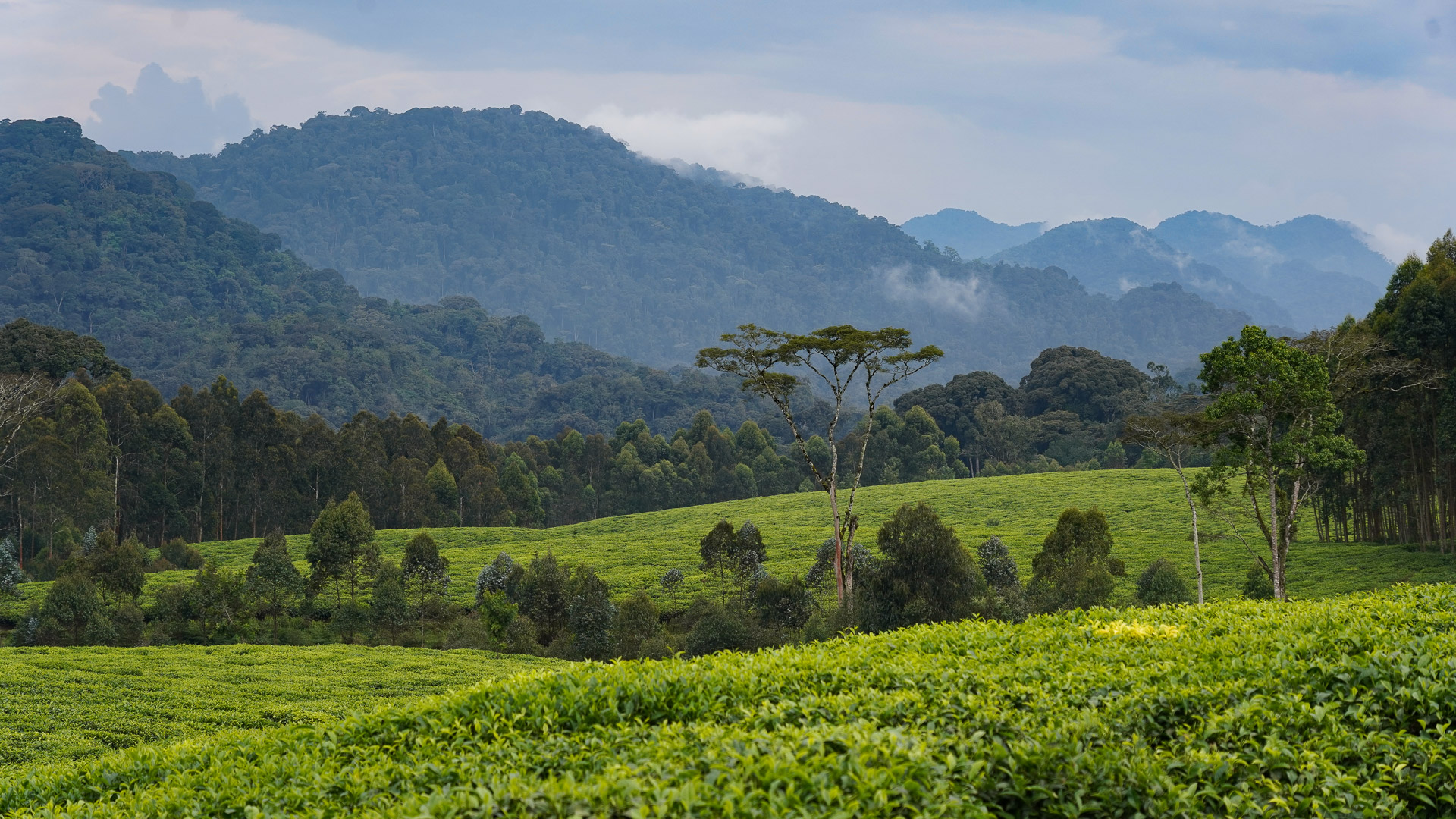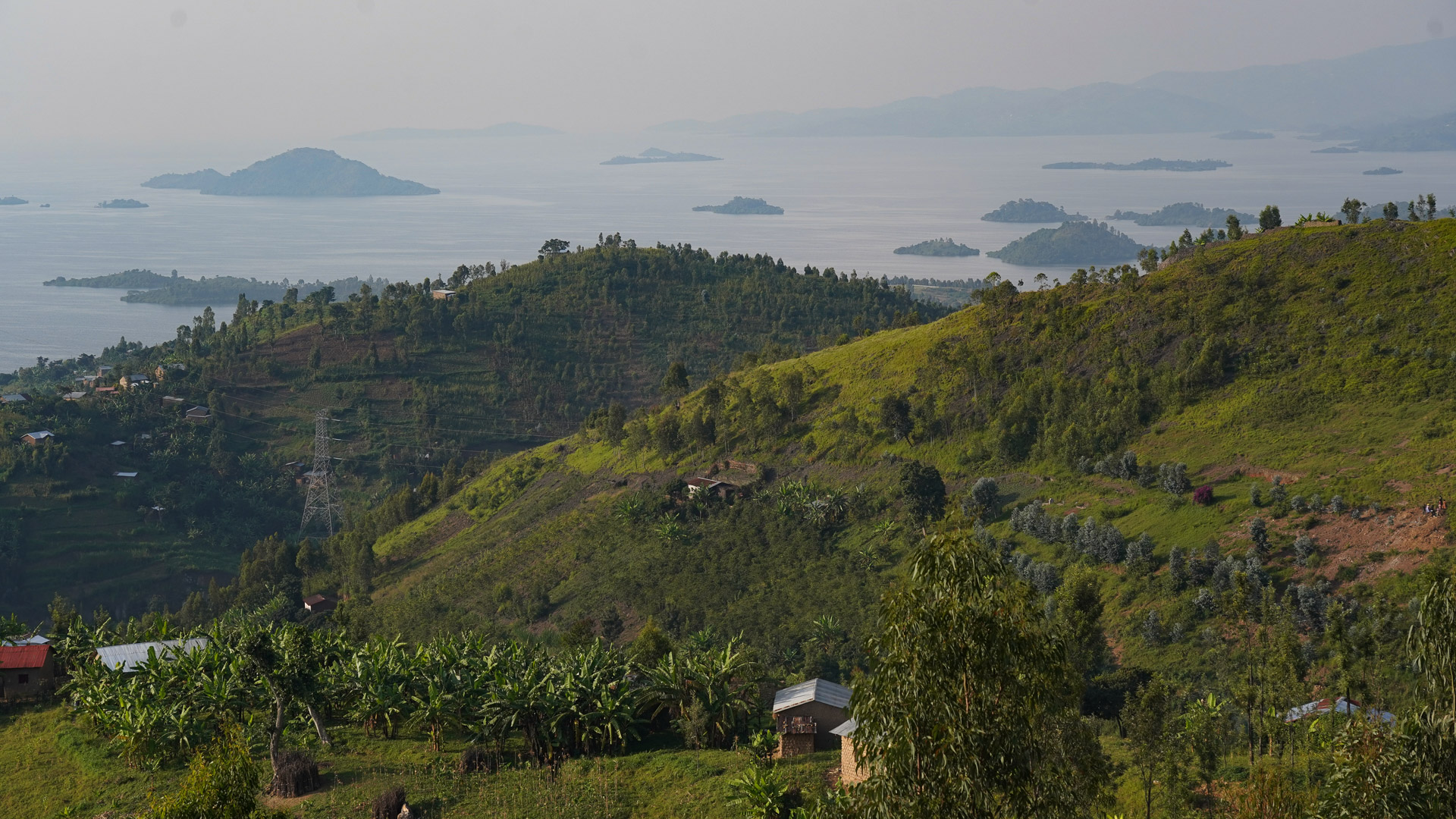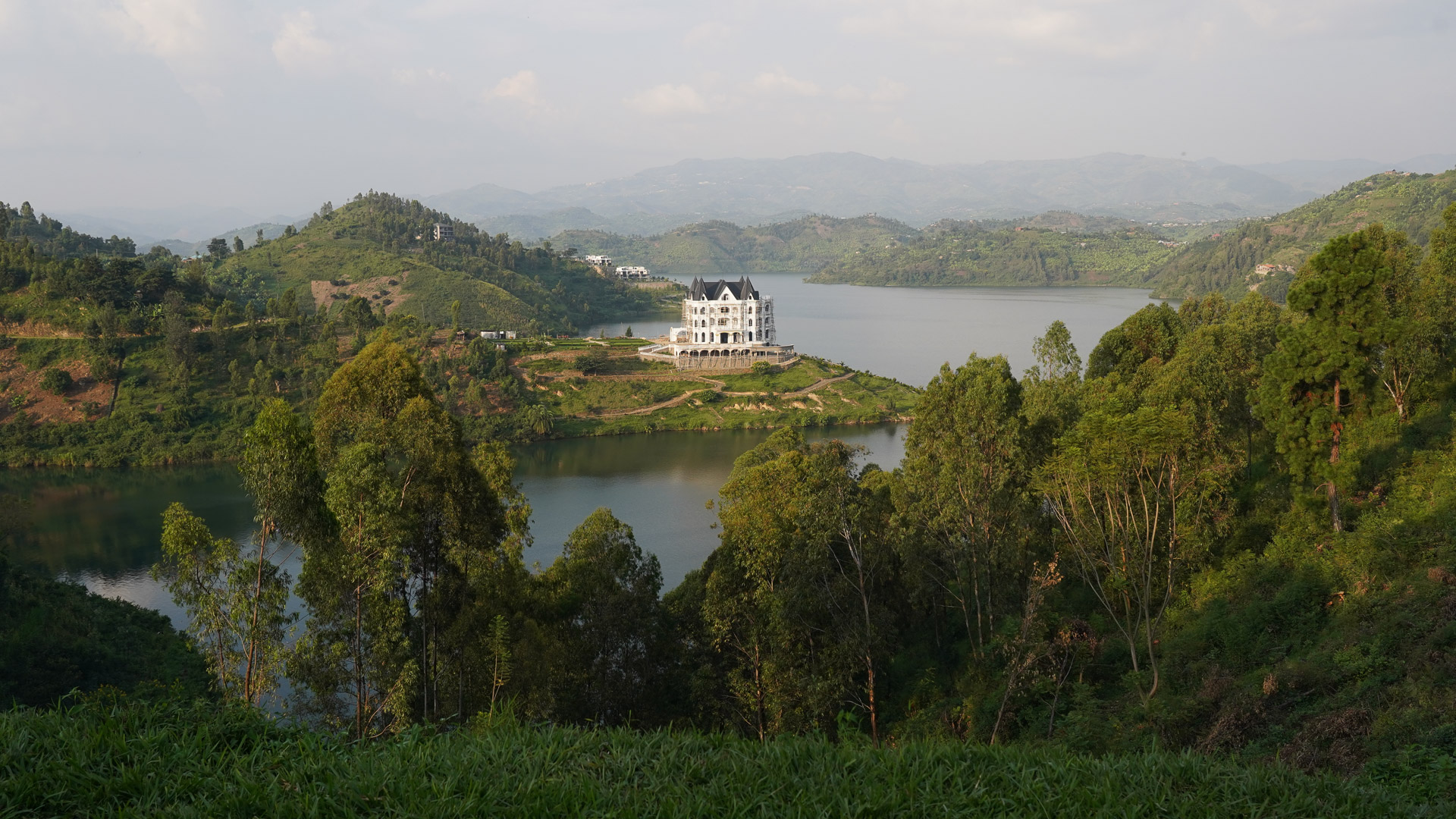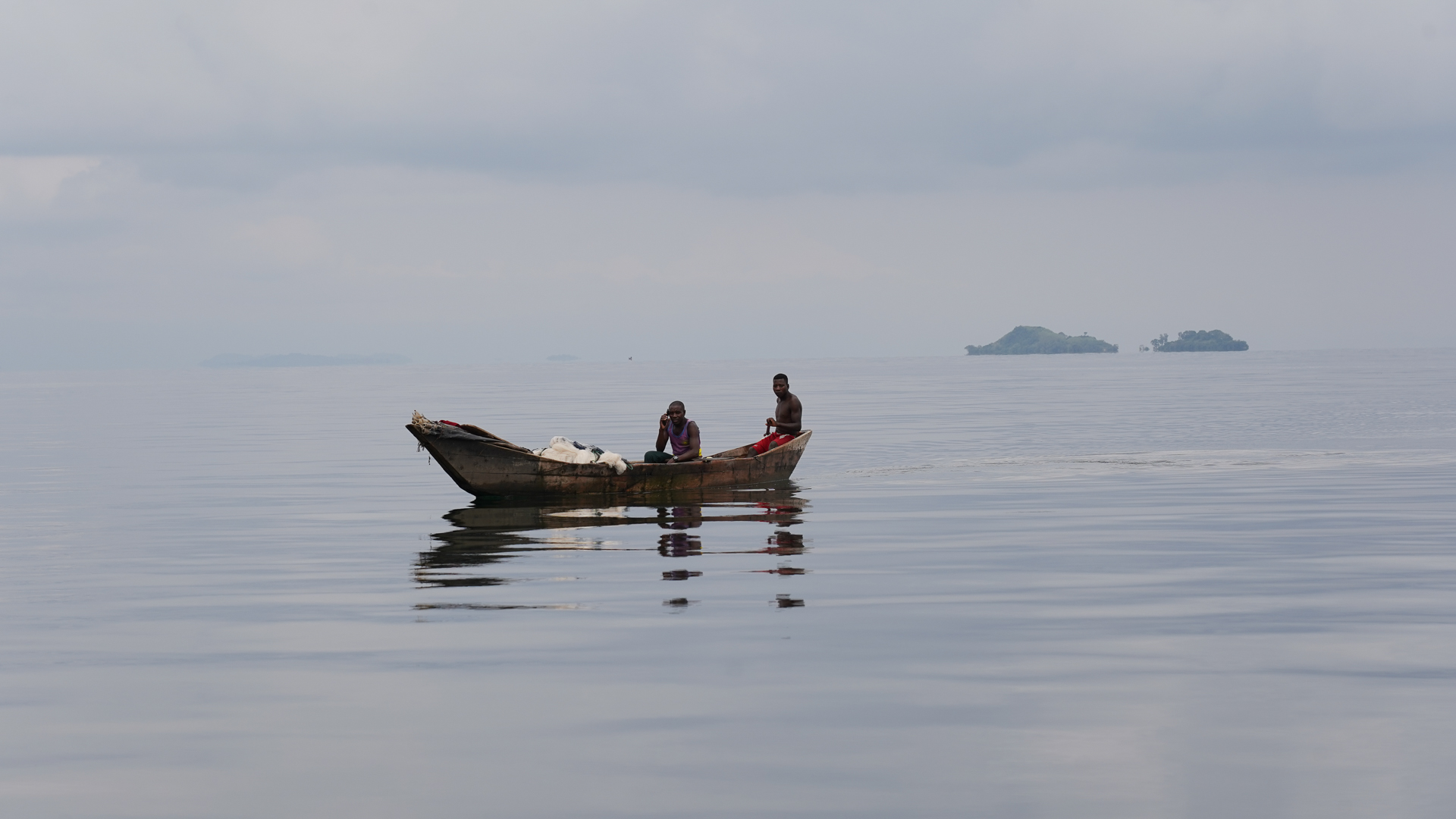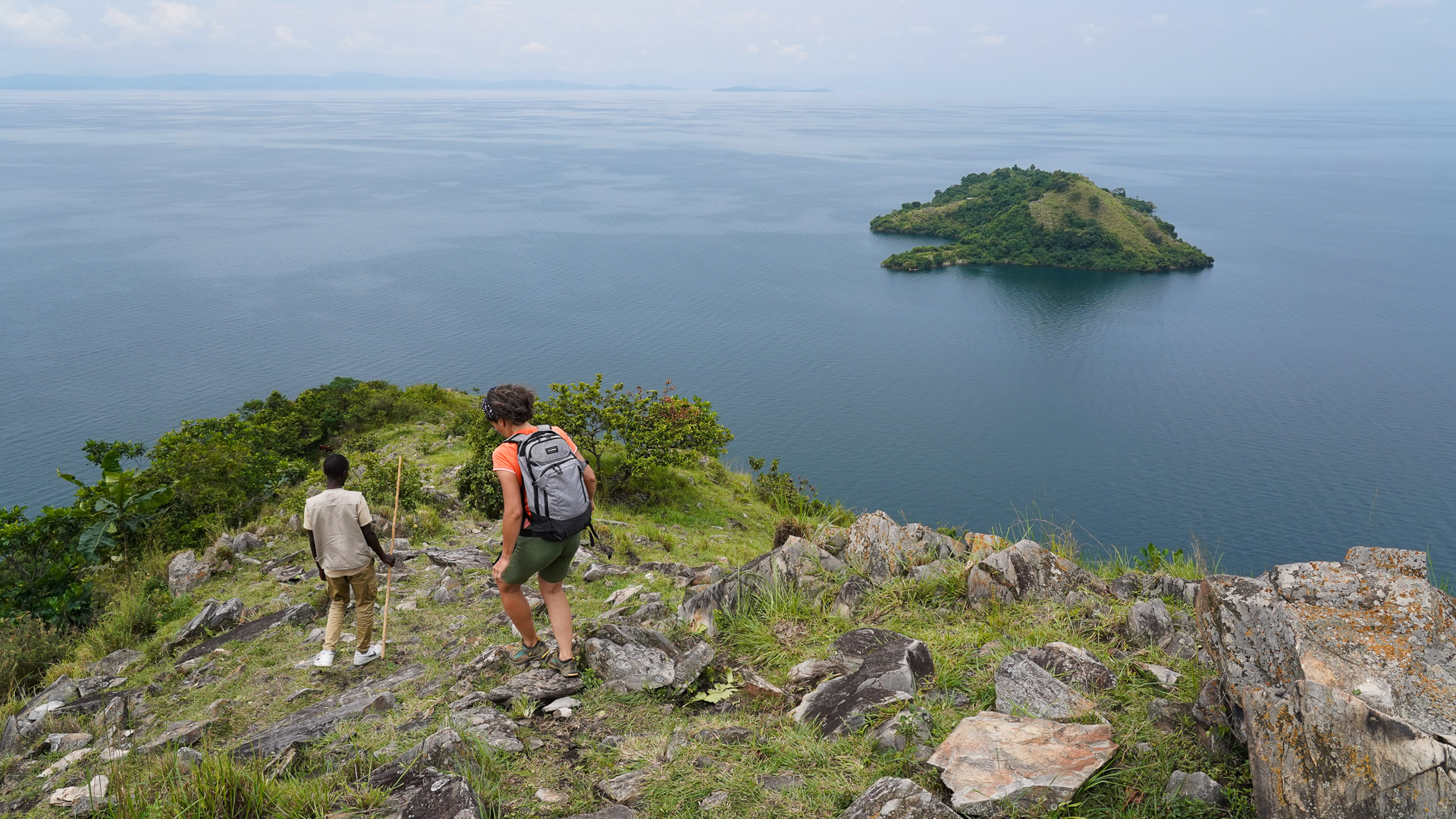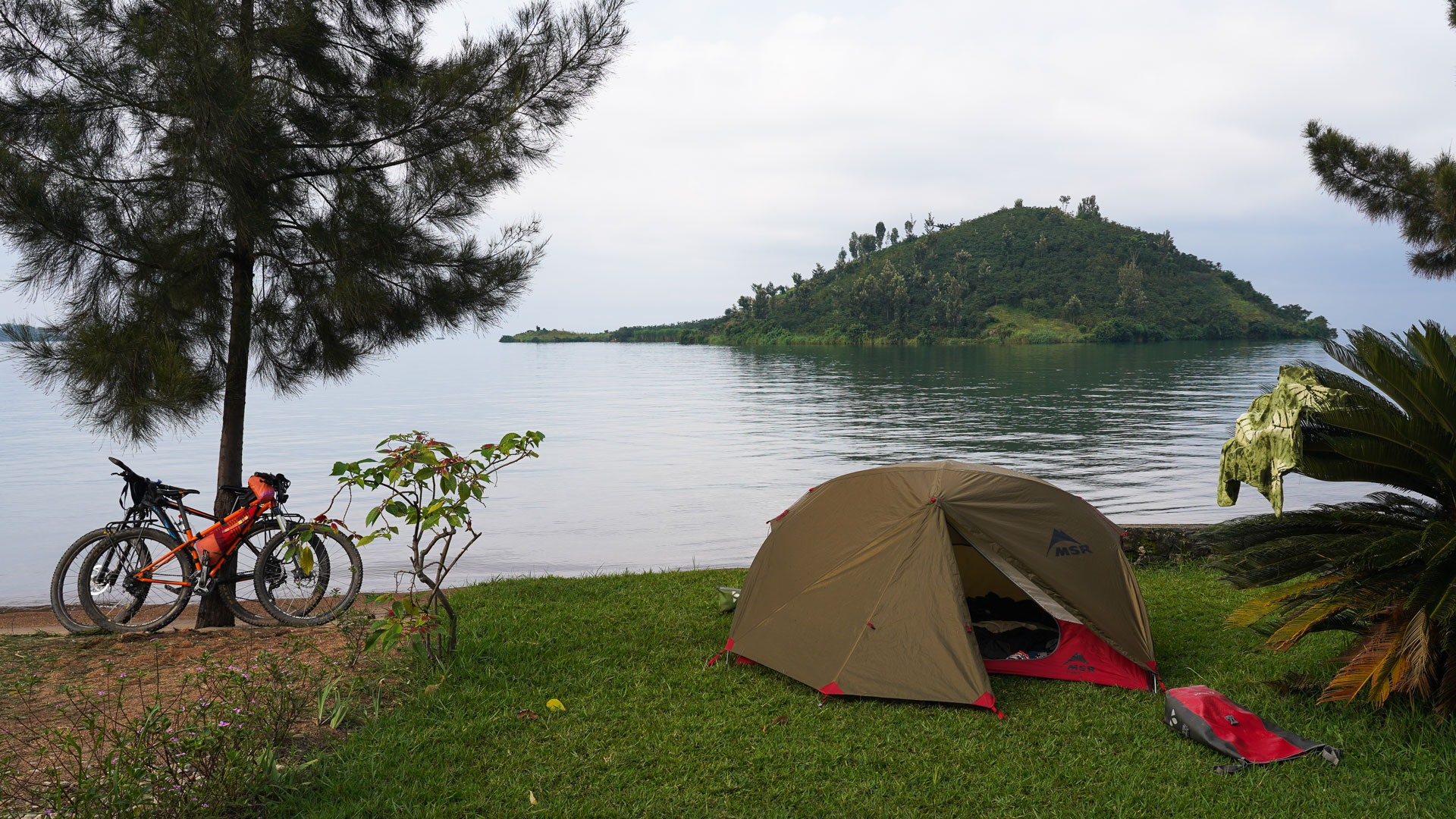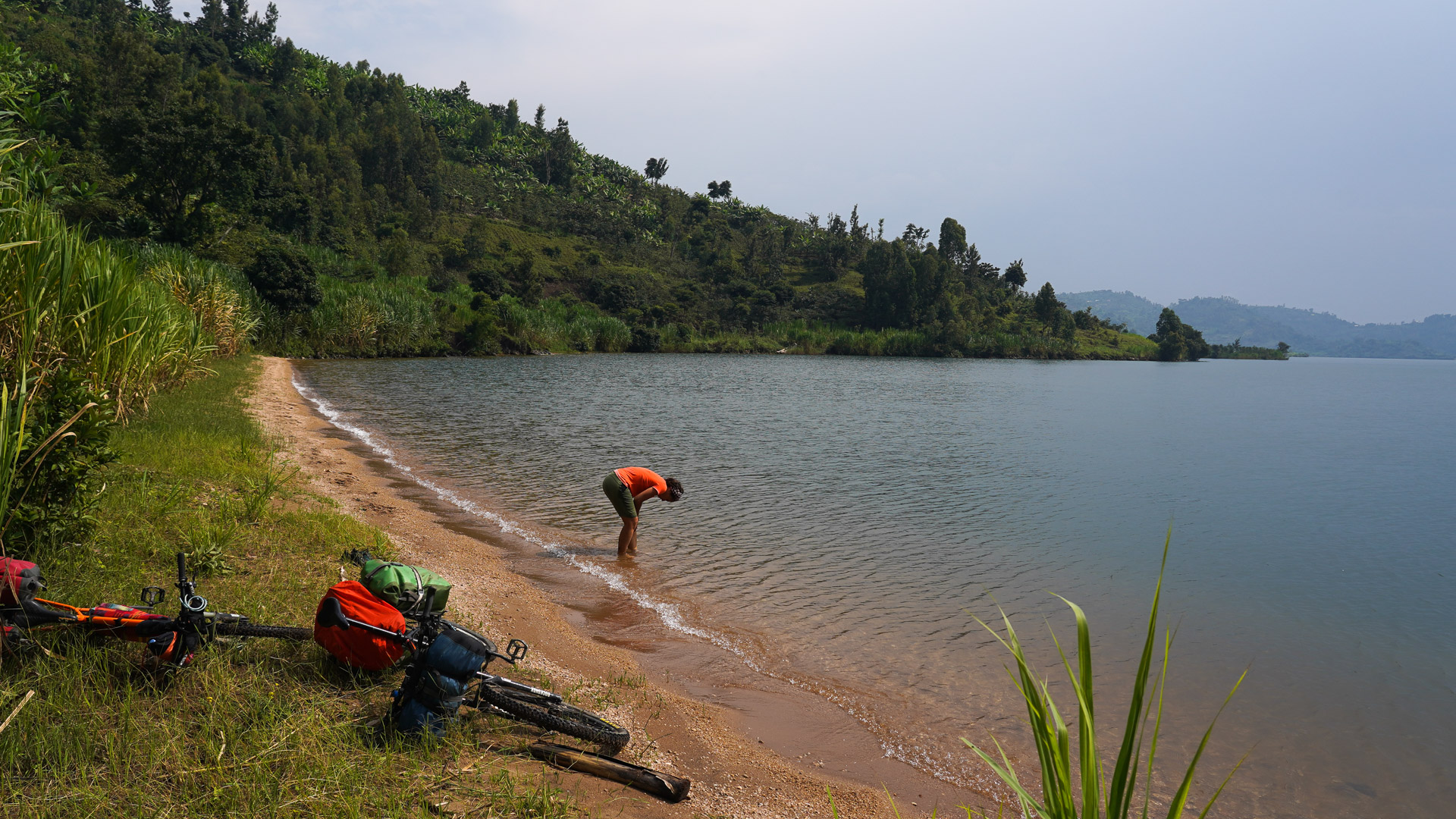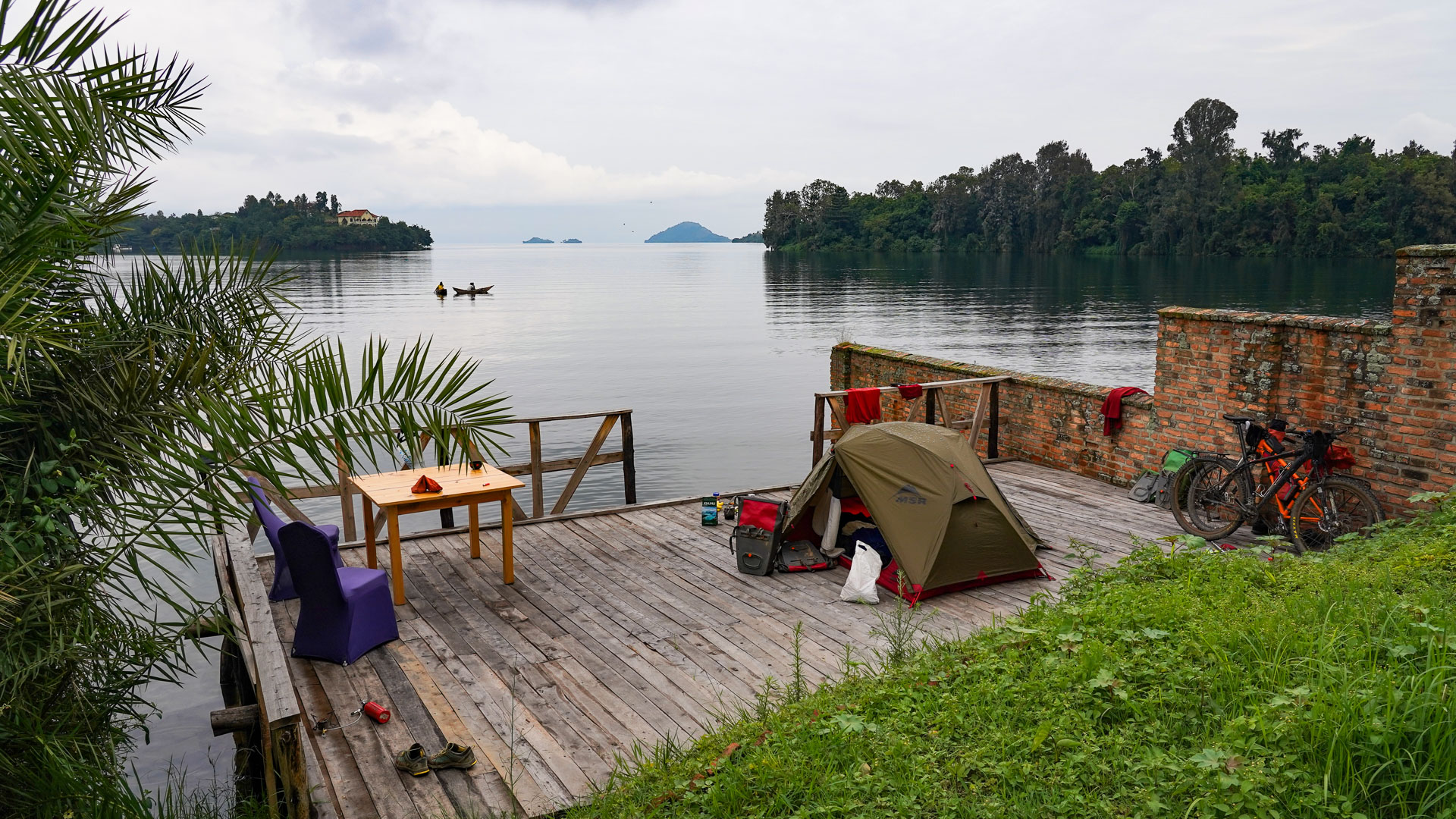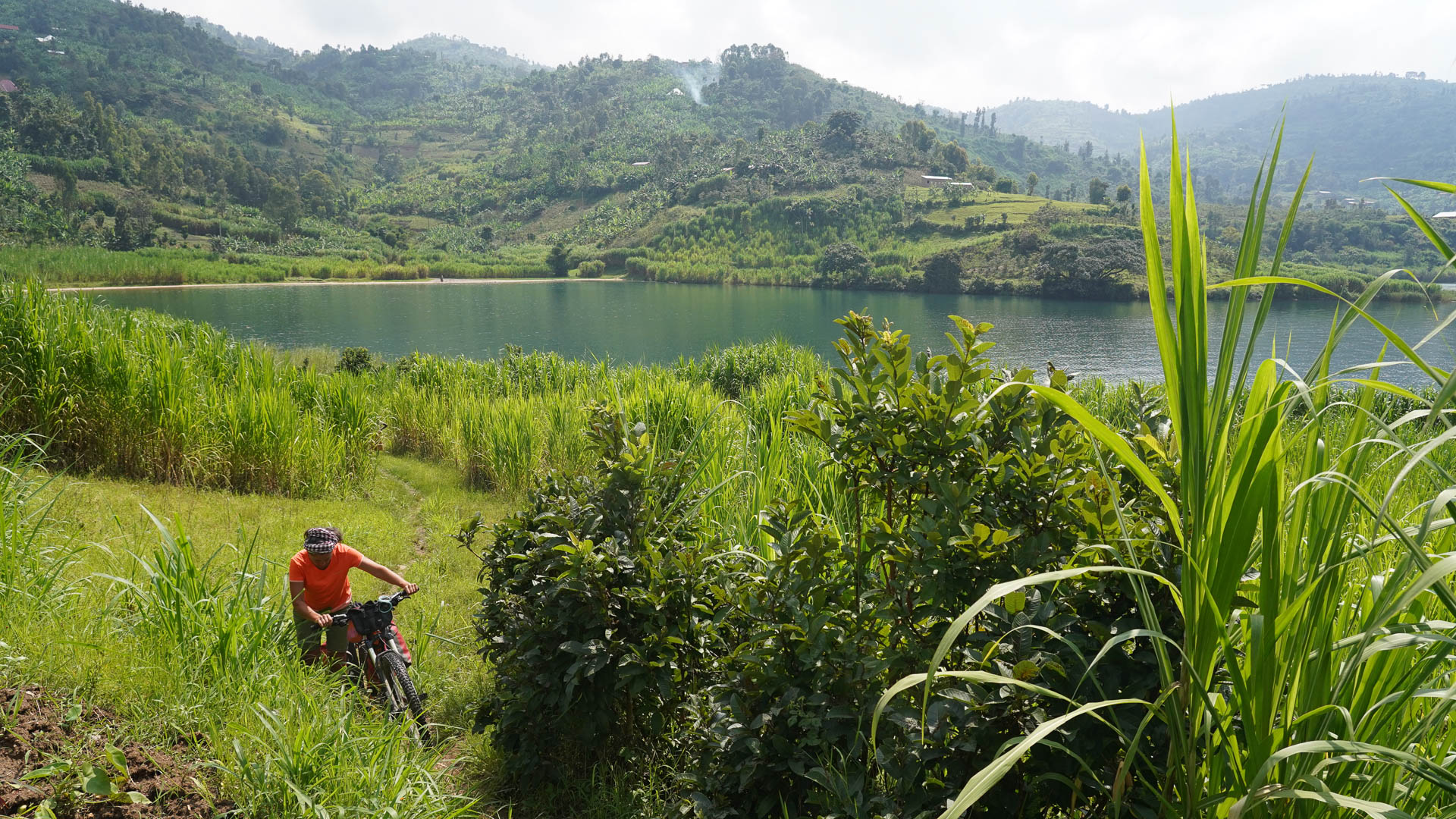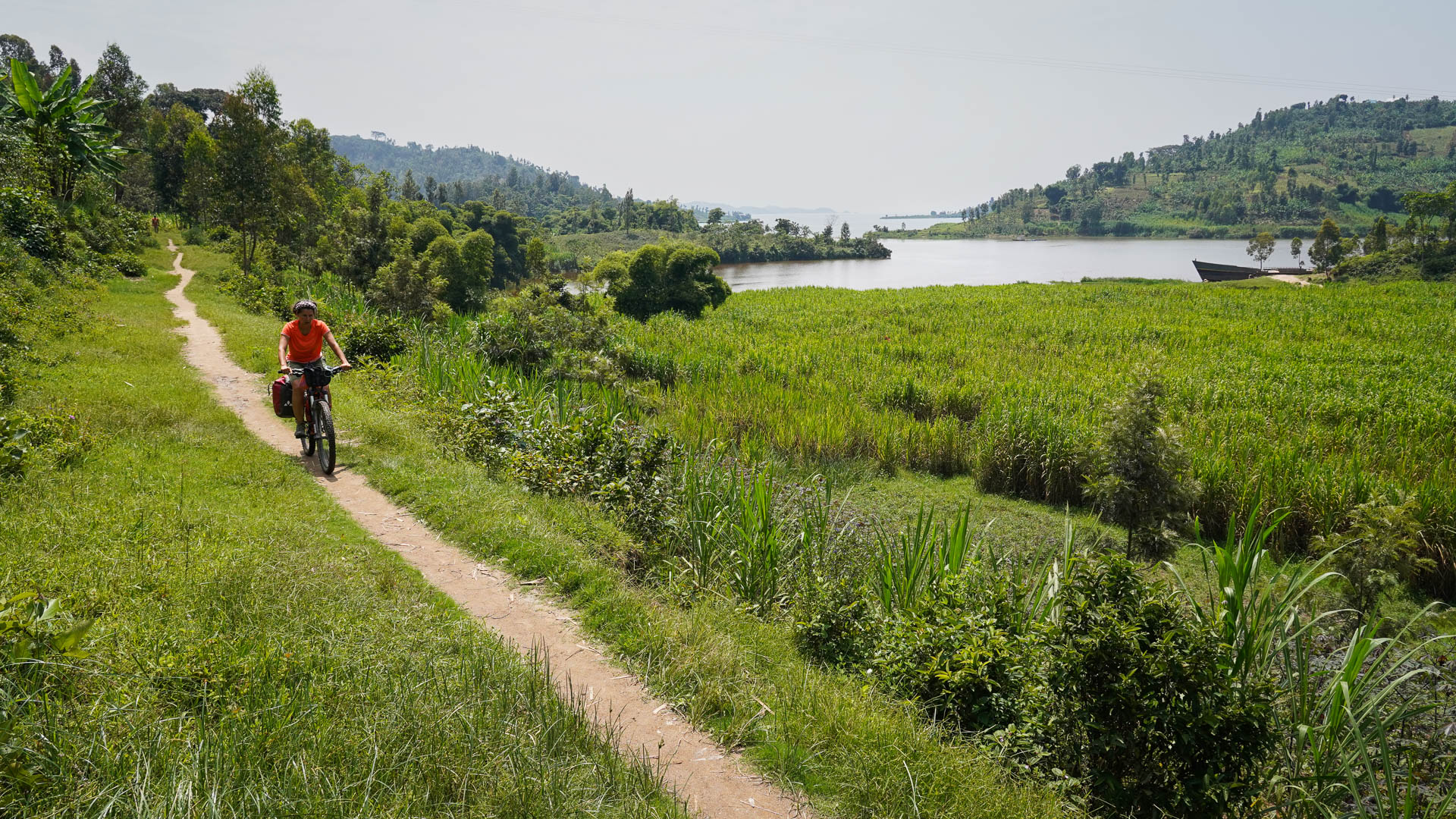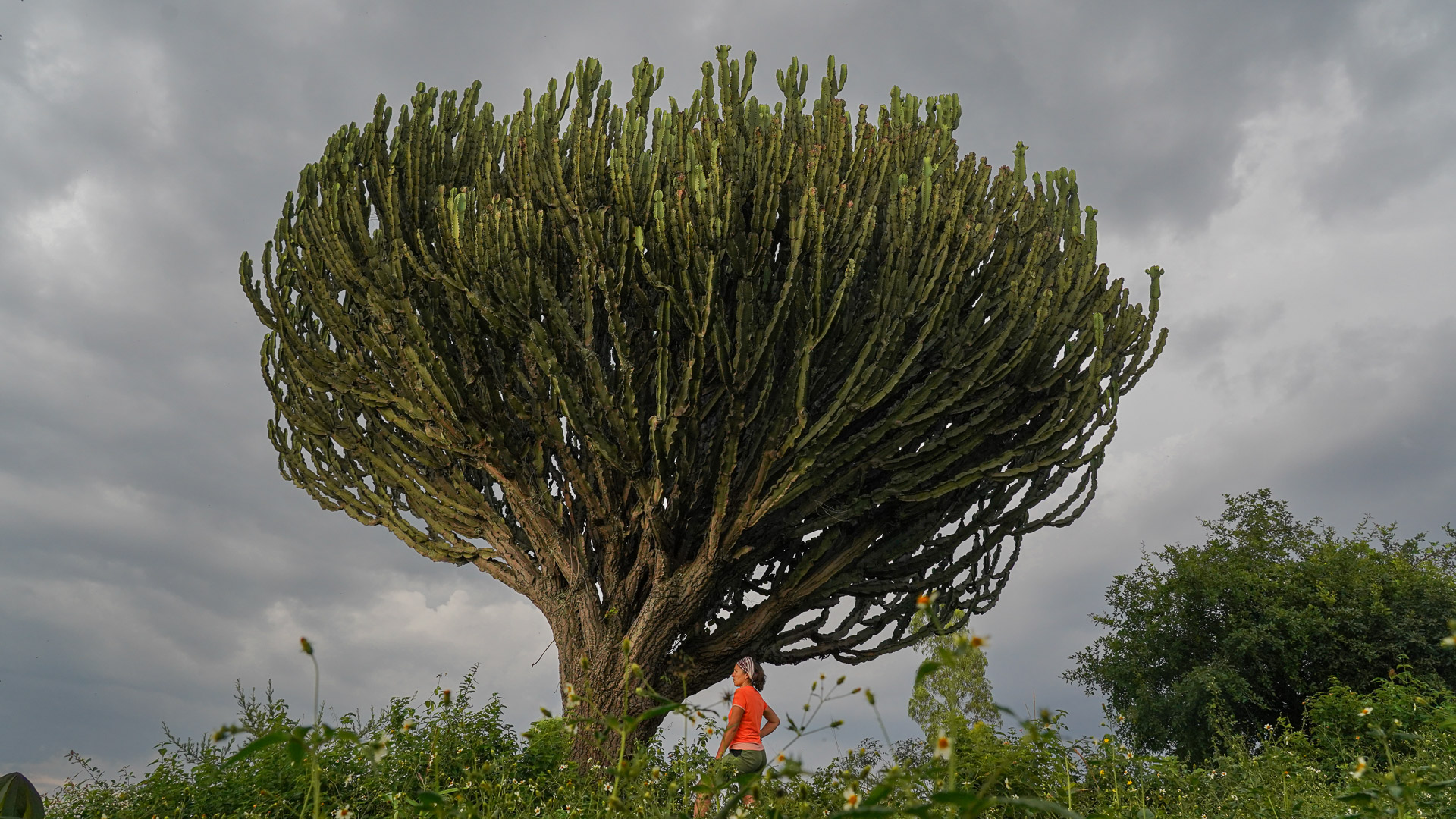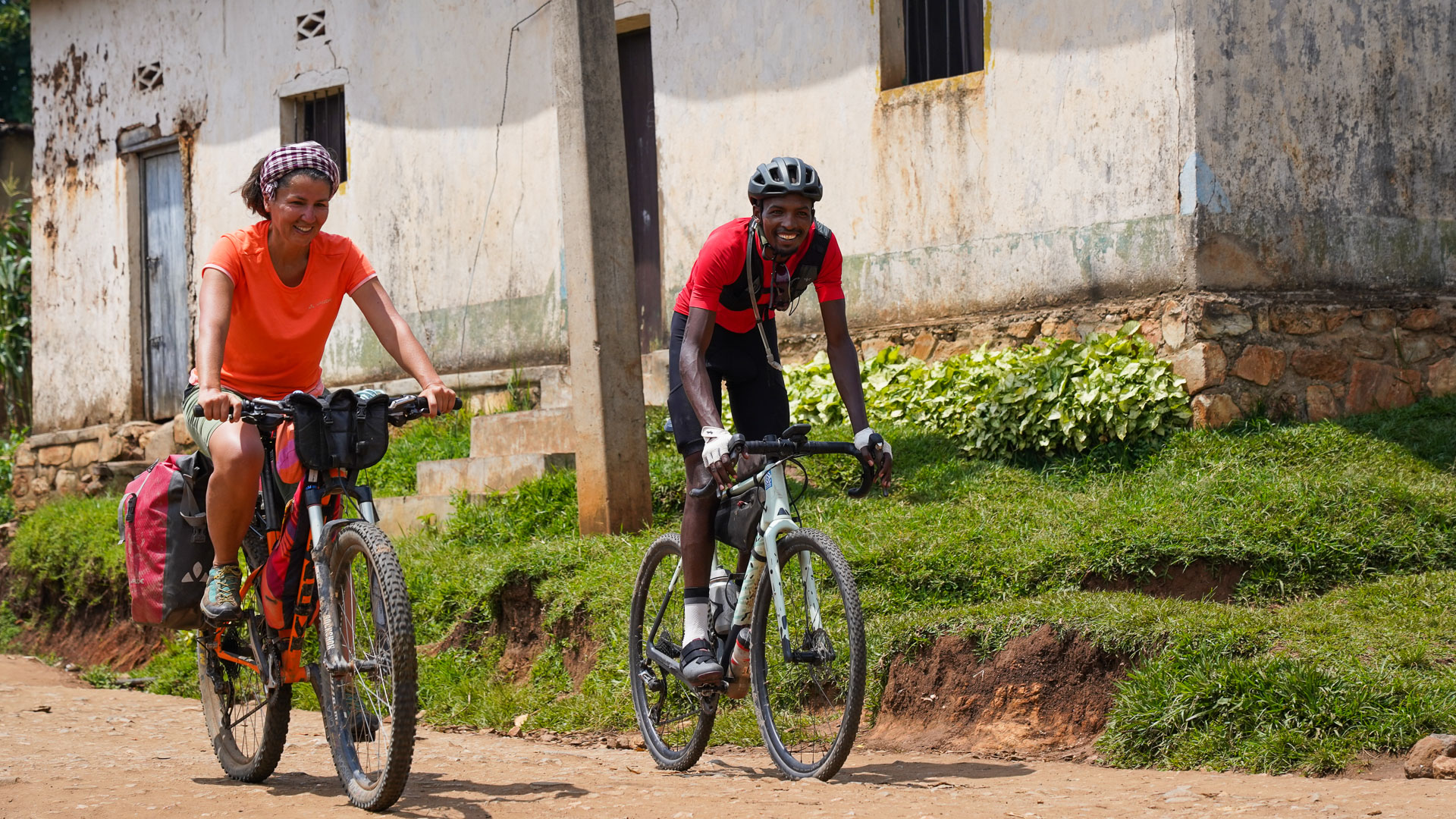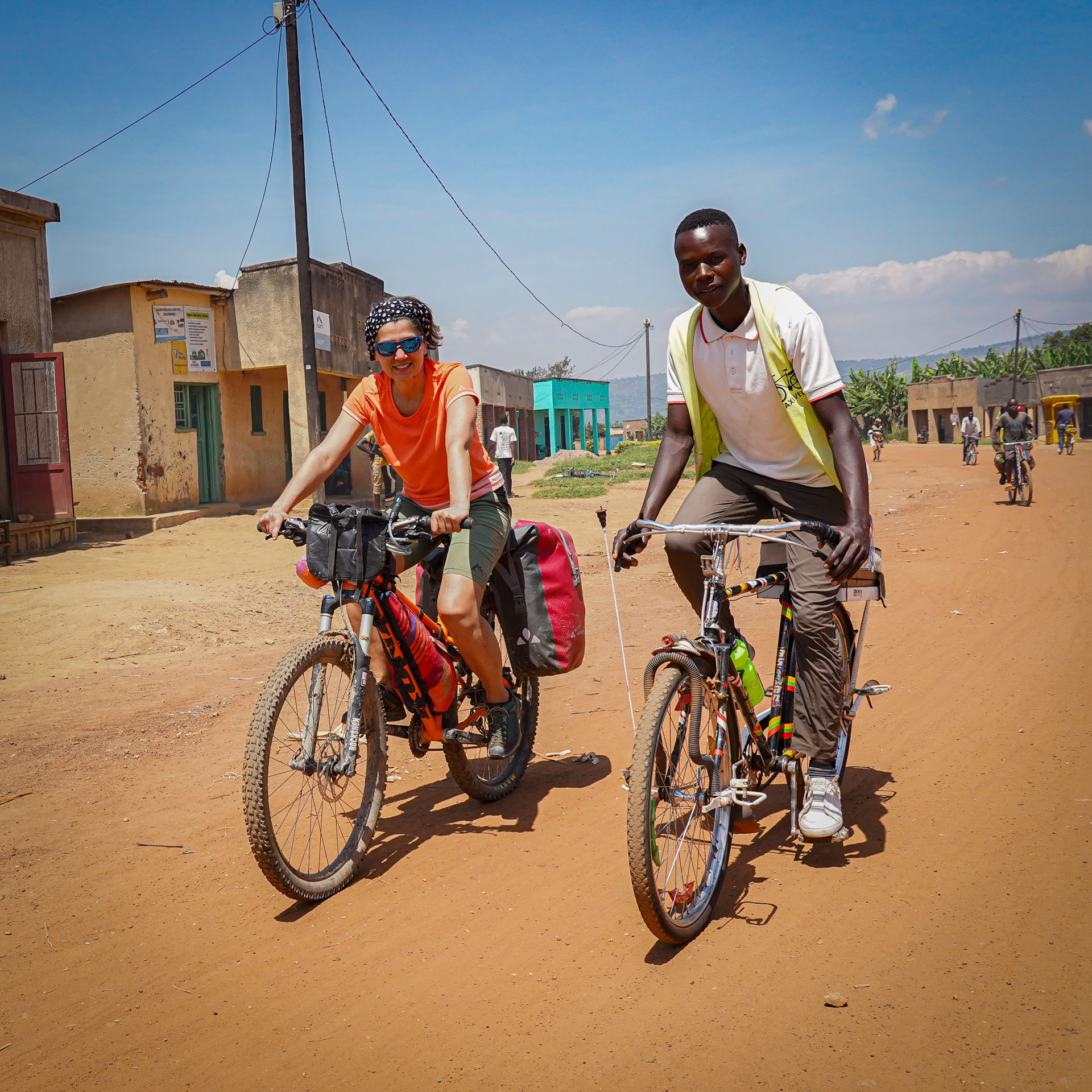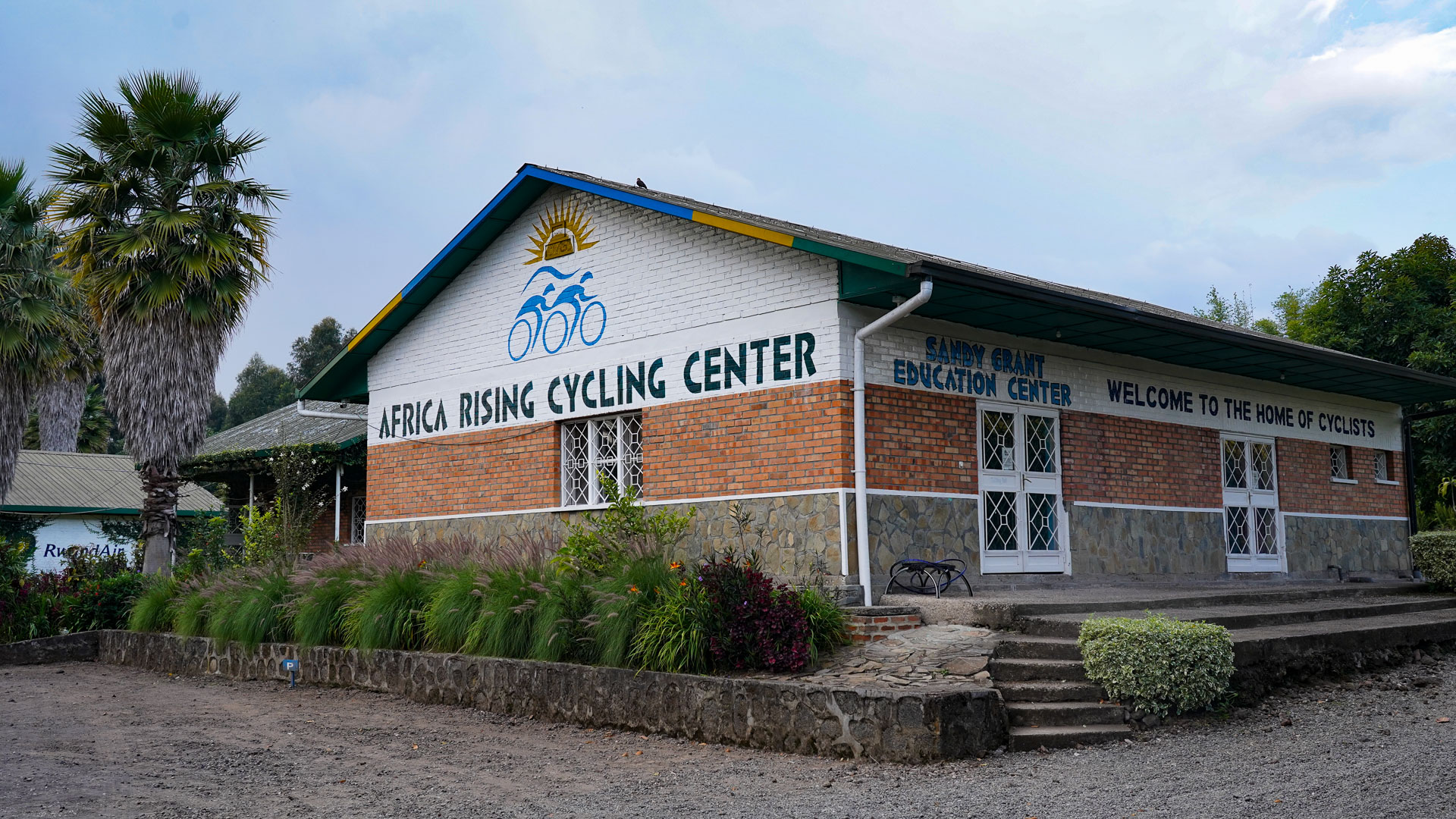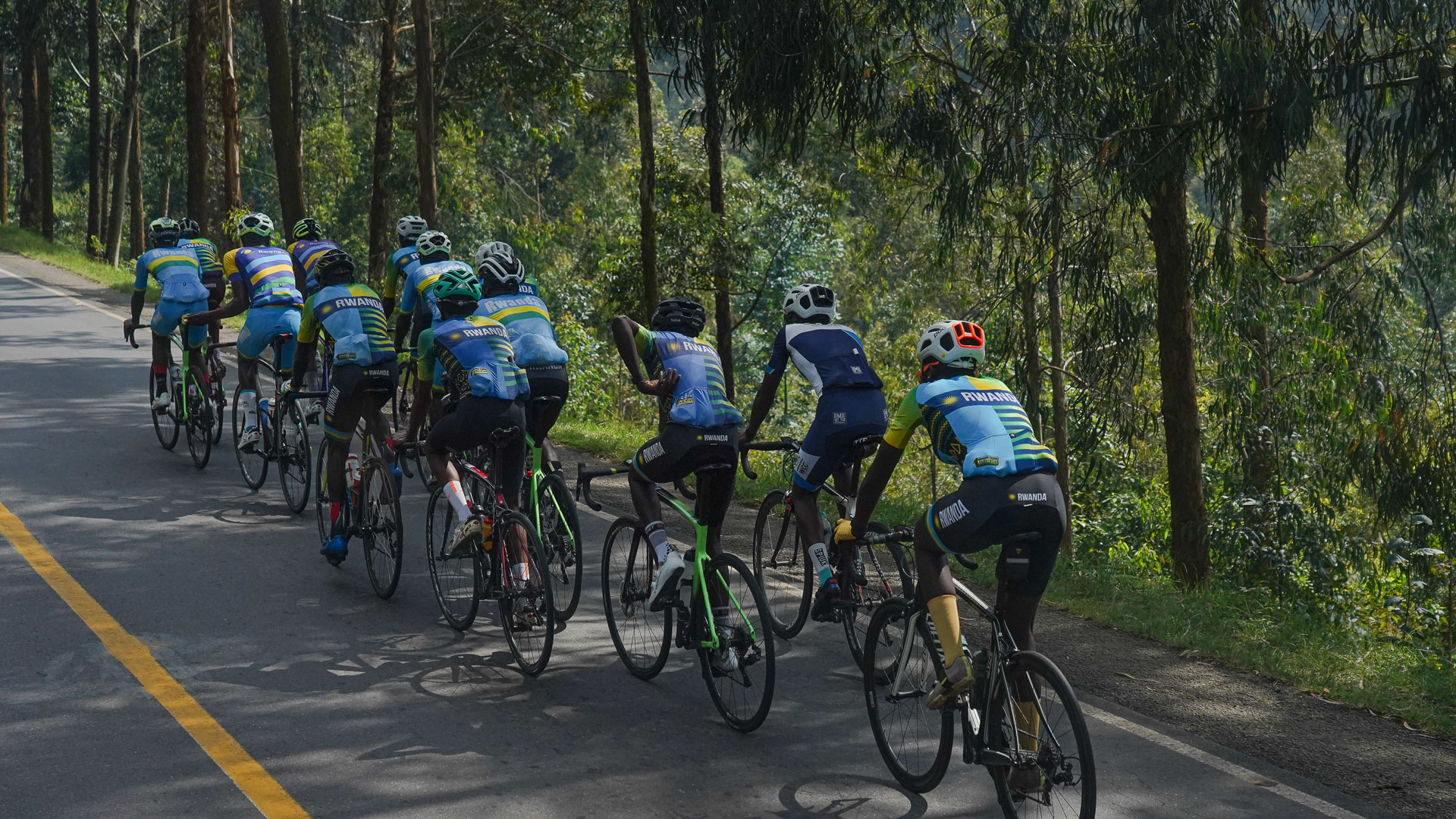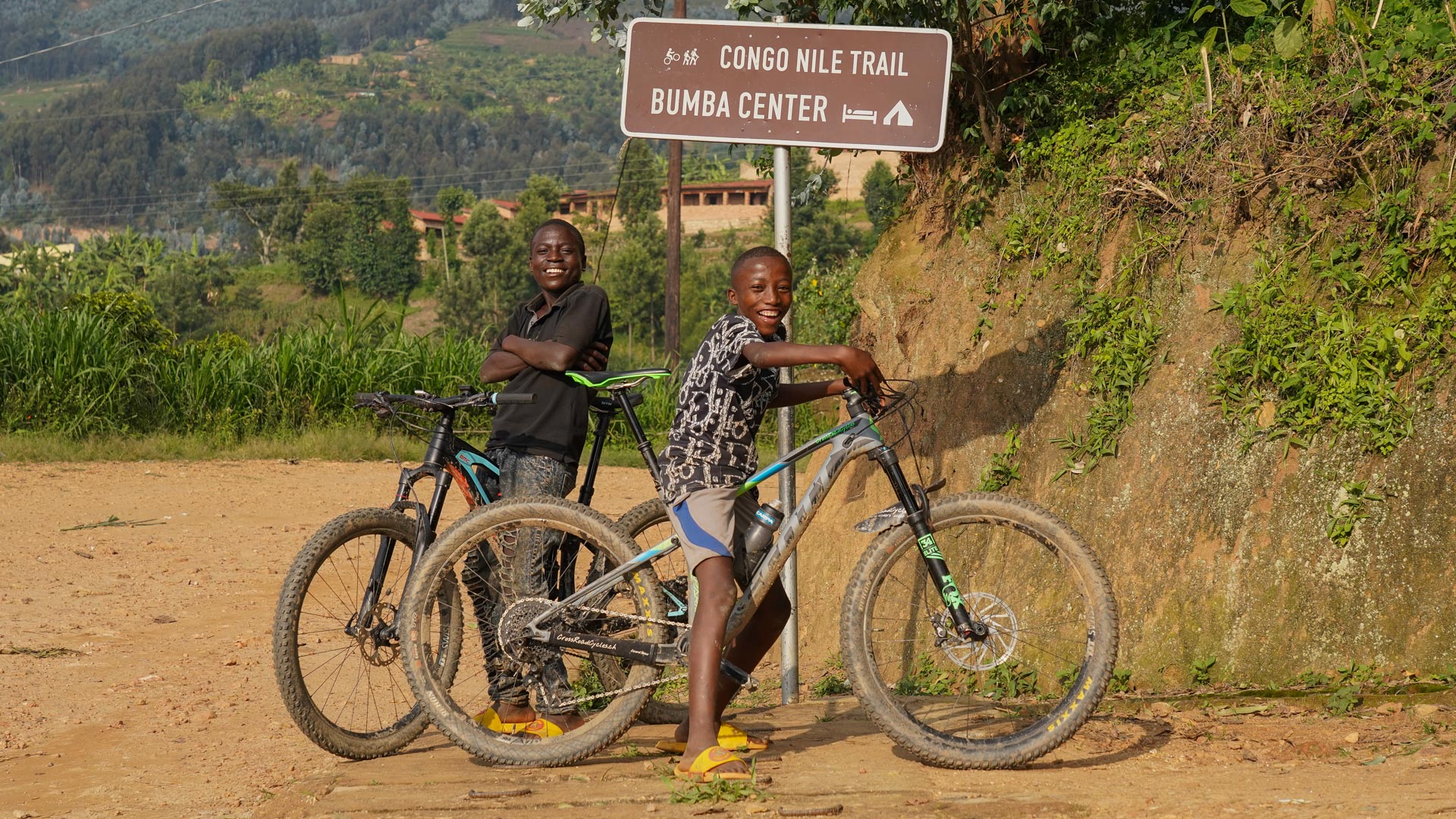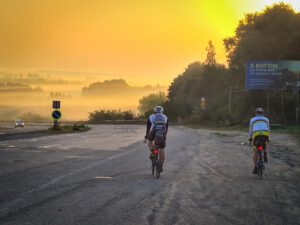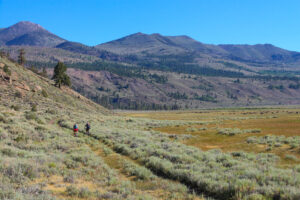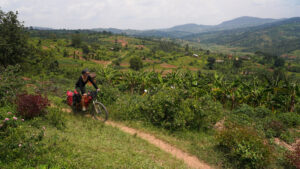CYCLING THE THOUSAND HILLS OF RWANDA
There are countries whose destiny is not to be top of the list of "hot" destinations. Rwanda, with its tragic history, is one such country. In the middle of January, during its short dry season, we explored the tracks and trails that criss-cross its countless hills. Much like its superb climate, we encountered nothing but kindness, warmth and generosity.
Authors
Text: Géraldine Benestar and Pascal Gaudin
Photos: Pascal Gaudin
Section
Bike travel
With the support of
Yégo Yégo !
Over the course of a month long tour on the roads and tracks of Rwanda, we were greeted by every single person we passed. Every day, hundreds of faces lit up with a hearty “yégo…”, sometimes complemented with a hand shake or a clenched fist. A farmer with a hoe on his shoulder, women swaying with the weight of the bags on their heads, young girls in their Sunday best on their way to mass, schoolchildren in uniform, cyclists pushing heavily laden bicycles, a young man leading his small herd of goats on the side of the road…
Encountering persons over a certain age, we’re greeted in an emphatic French: “Bonjour, comment ça va ?” We start chatting, learning a few new Kinyarwanda words in the process. Elderly ladies raise both hands when they see us, as if invoking the heavens. Often, they embrace us and gently tell us things we don’t understand. We manage to explain to them that we have children in France, who are now grown up and working. Their kindness and gentleness is touching. Could this be what we call wisdom?
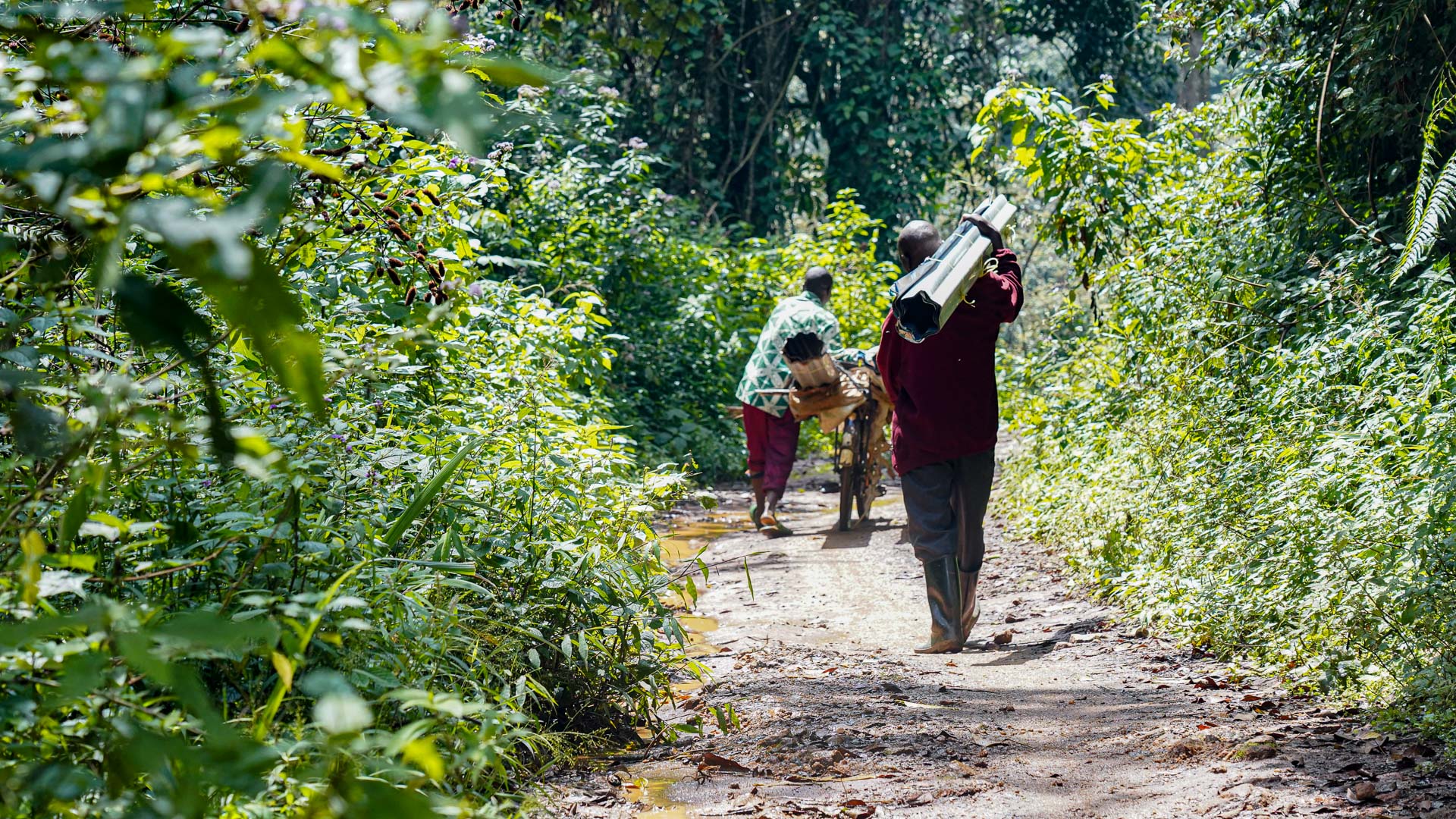
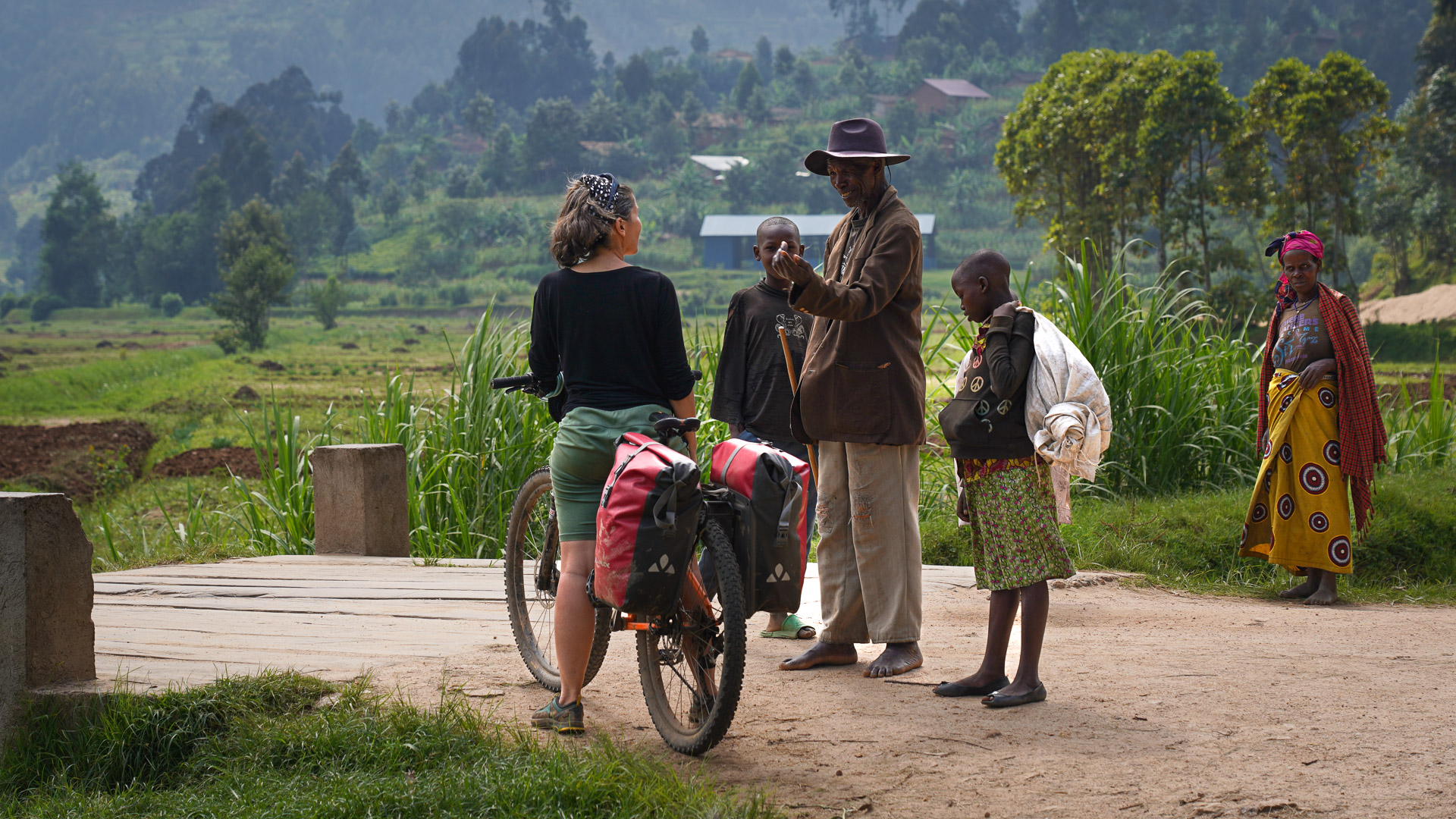
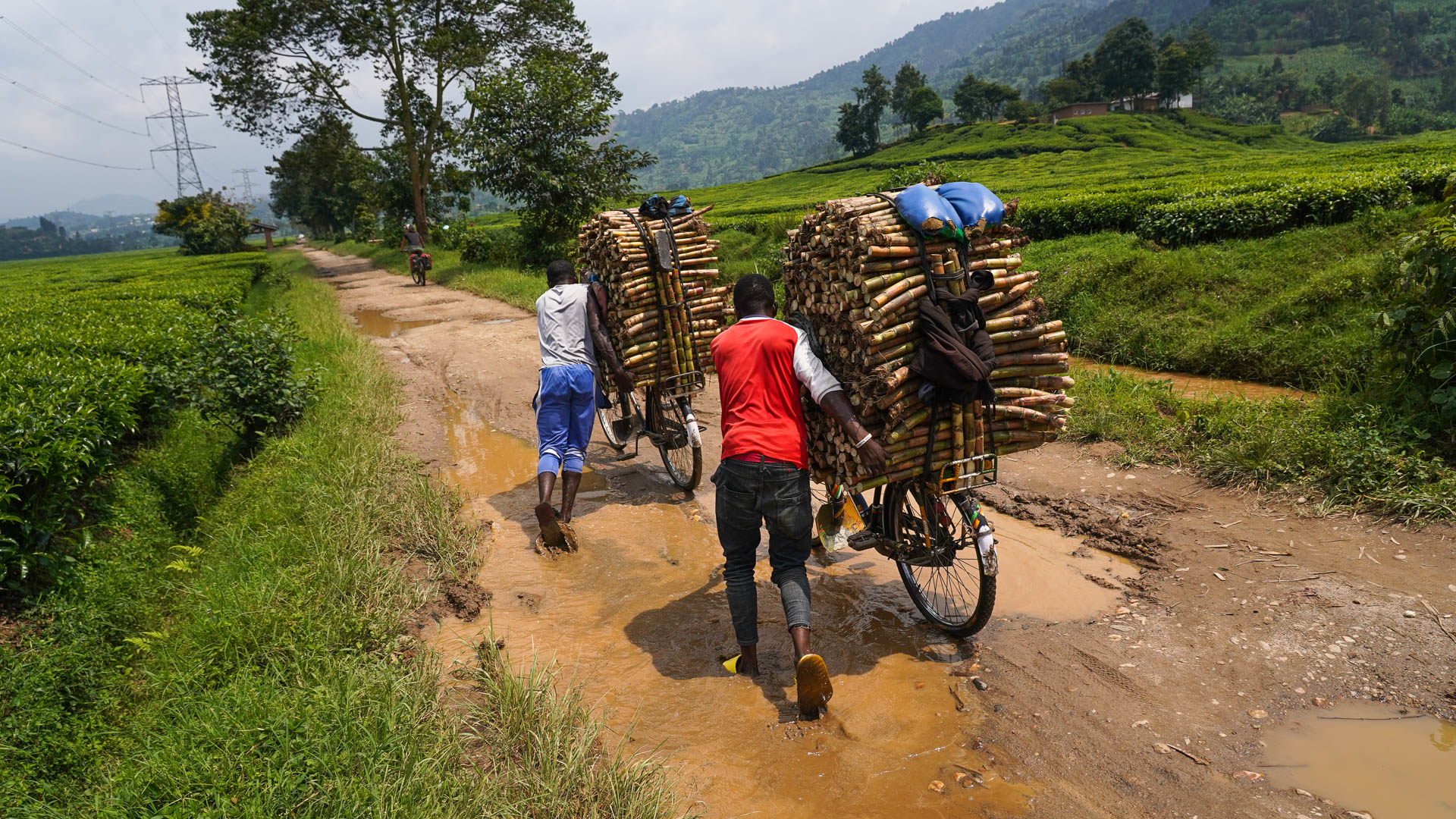
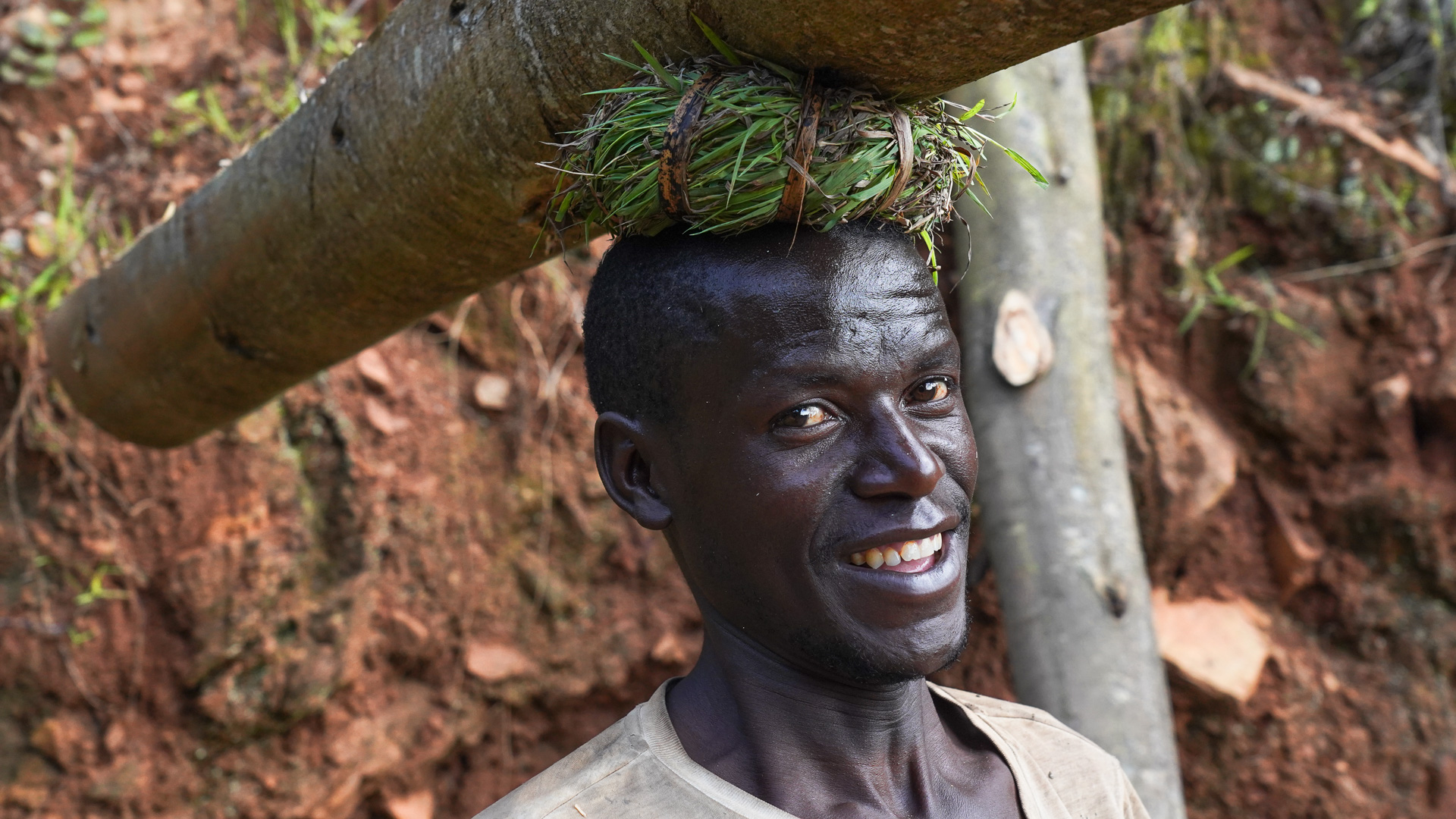
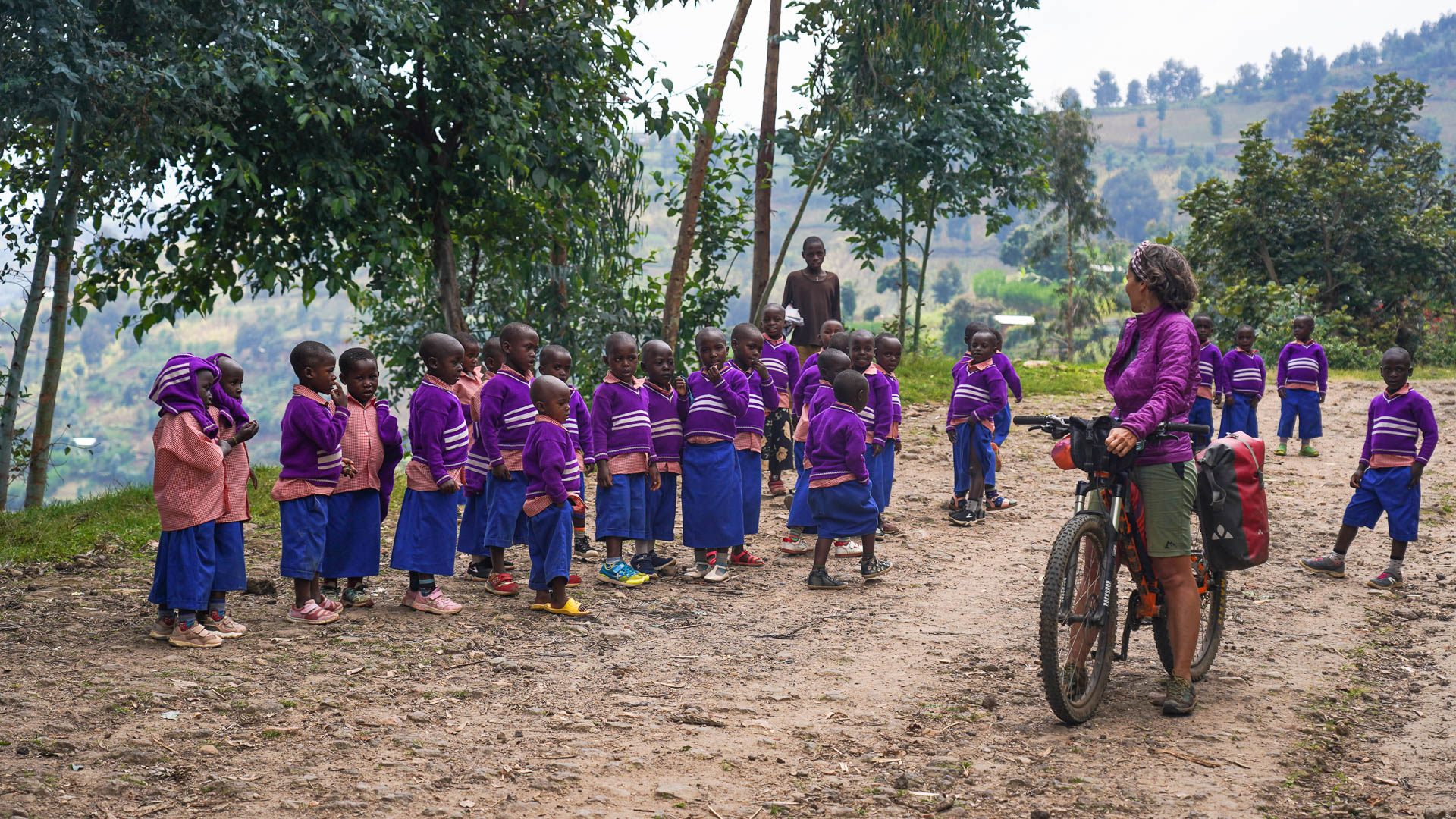
If we pass so many people each day, it’s because almost the entire population is on foot. Along the rare asphalt roads or red laterite tracks, on the paths that cross the plantations, people walk, carry and work from morning till night. Small motorcycles and bicycle taxis link certain villages, lightening the load for those who can afford it. Much to our delight, their passage creates a narrow, well-packed and smooth line, on tracks where we wind our way between potholes and ruts, or on narrow singletrack paths. The terrain is steep and the rainy seasons create deep gullies (and sometimes even destroy bridges!). We encounter no more than one or two 4x4s or small trucks each day.
Garden of Eden
Laboriously worked by hand, watered almost daily by rain, the land here is fertile and produces in abundance. Rwanda is a vast Garden of Eden, a joyous and stark contrast to our bland monocultures back home. Corn is planted beneath the banana trees, at the foot of which beans have been cleverly placed, a cocktail that improves and enriches the soil with nitrogen. Rwandan farmers have mastered the art of building mounds, at the foot of which water is channeled. Mini plots of cassava grow alongside those of sorghum. Silver oak illuminate the fields while protecting them from pests.
Every farmer has at least one cow, abundently fed on fresh grass and chopped banana leaves and stalks. Mixing excrement and straw, the ensuing manure makes excellent fertilizer. All members of the family are then called upon to haul the black gold that will boost the next harvest up the sloping fields, using cut-out cans carried on their heads. Permaculture seems to be an art mastered here at the highest level.
We came across an impressive variety of crops: corn, cassava, sugar cane, sweet potatoes, tree tomatoes, peas, cabbage, potatoes, onions, kidney beans, carrots, bananas (6 different varieties!), avocados, guavas, mangoes, papaya… And depending on the altitude: rice, coffee and tea. No one is deterred by the steepness of the slopes, which are cultivated on all sides. A real land of milk and honey!
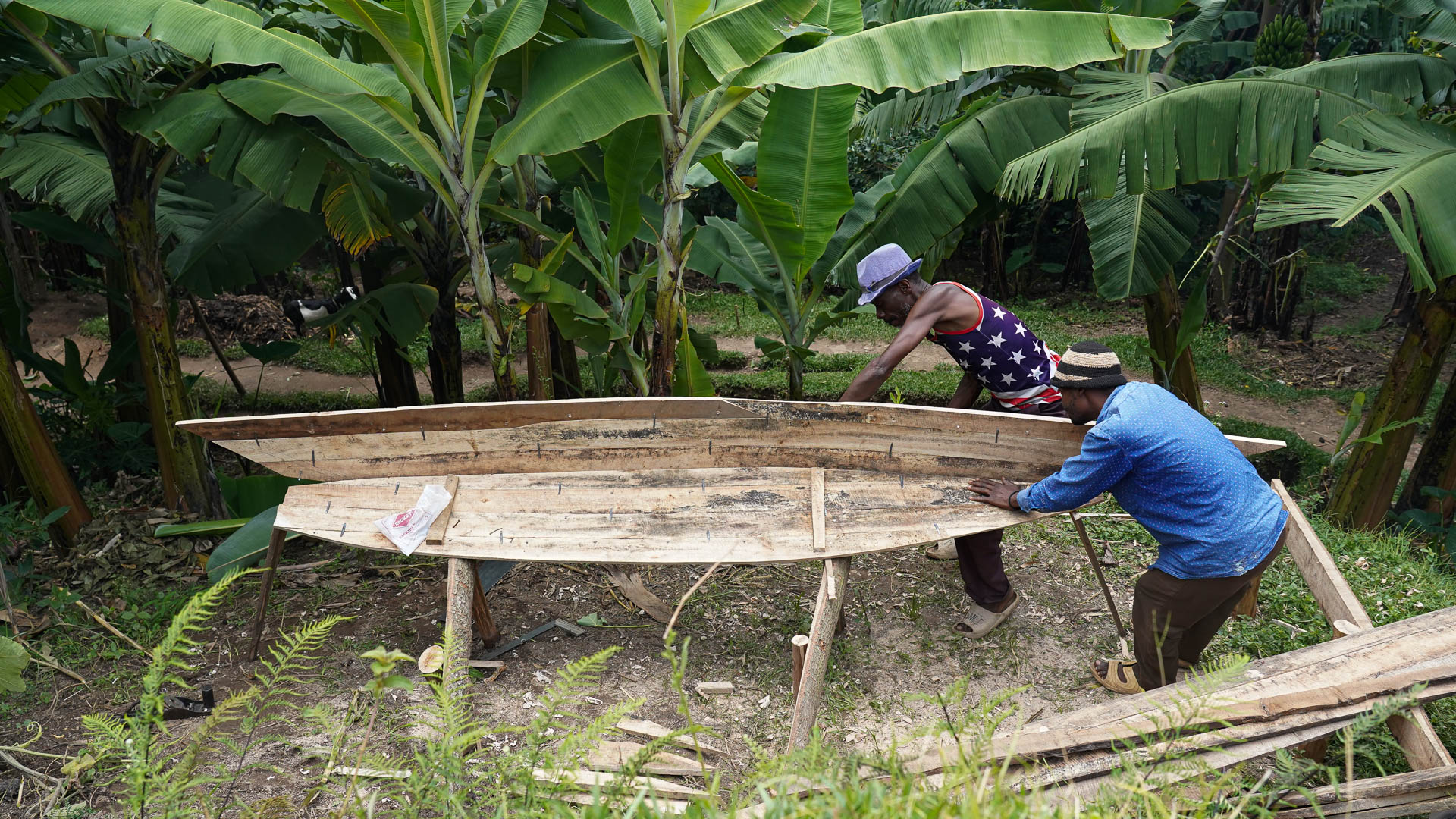
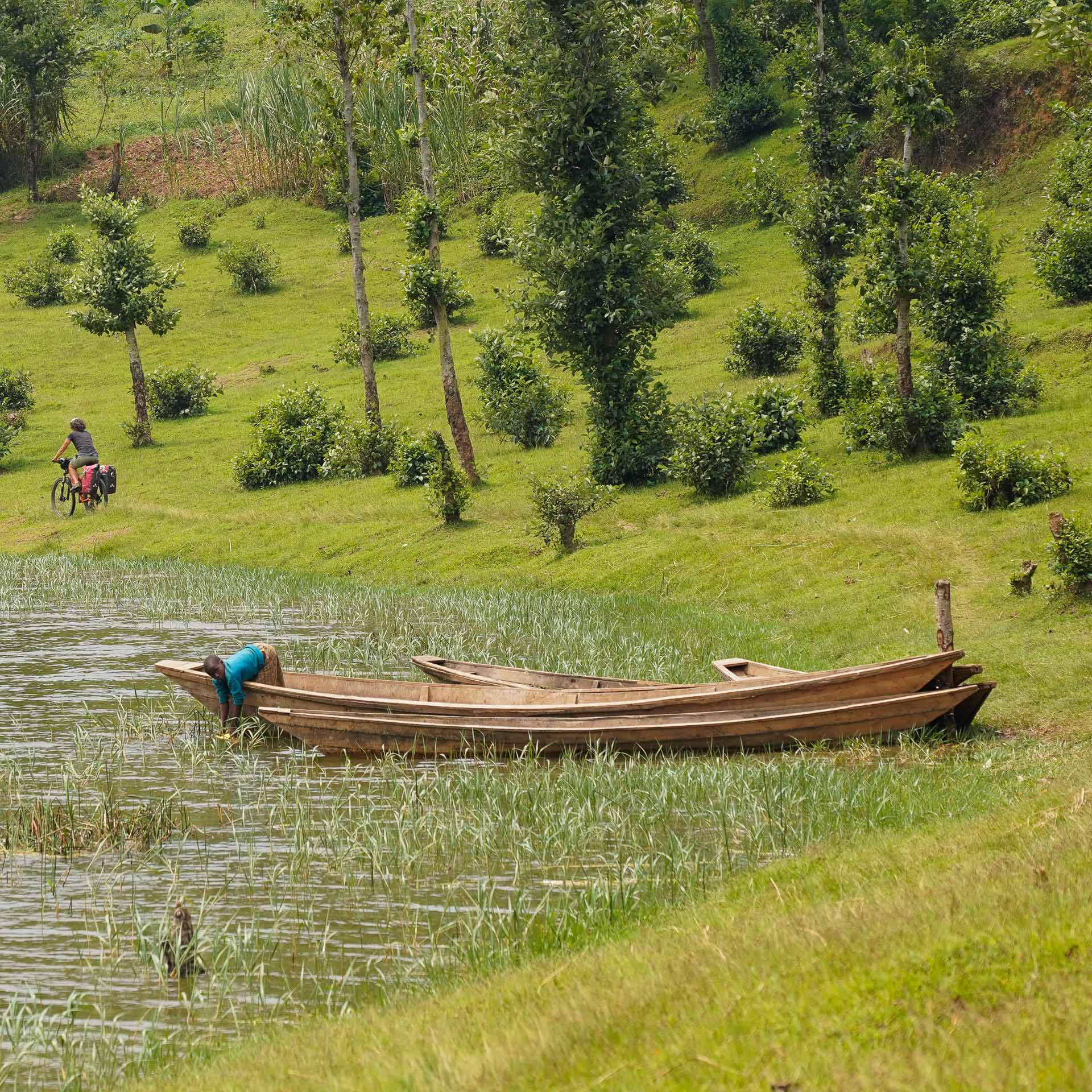
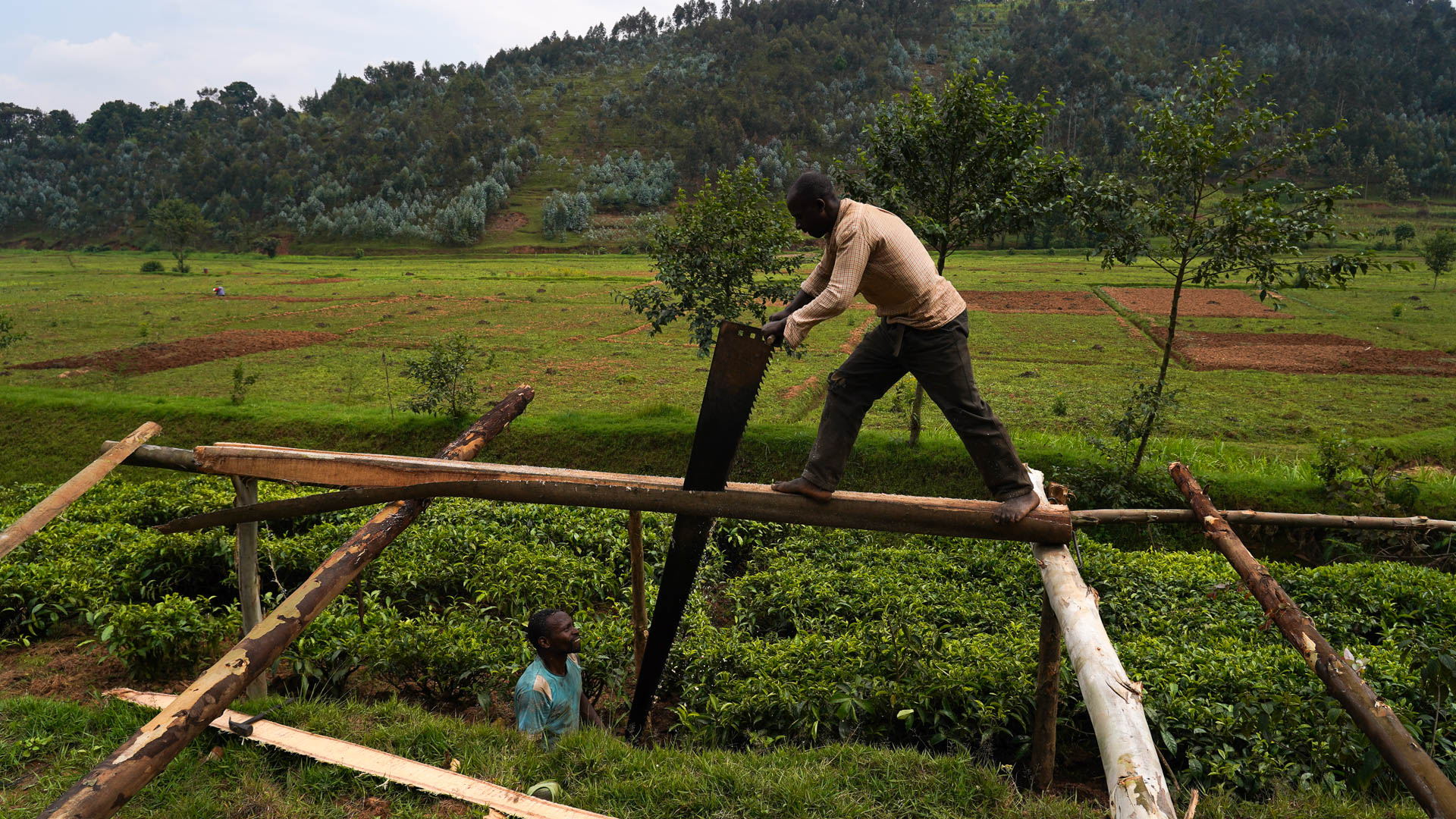
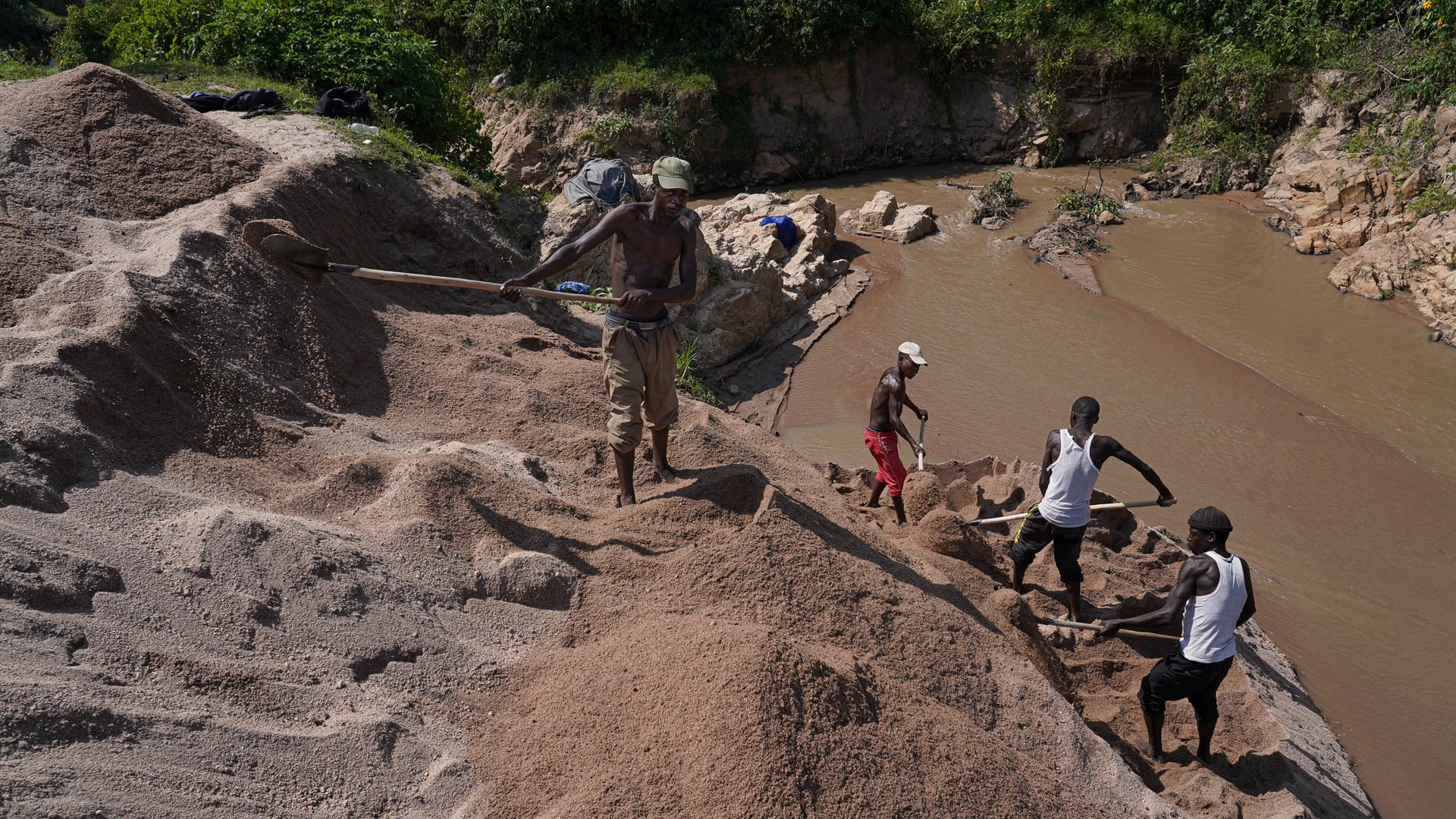
At first glance, it’s hard to distinguish what each store sells, and we’re not yet able to spot the subtle differences… Drawn in by the thermos flasks and cakes behind a window, we discover our first treat: “chaï tangawisi” (ginger tea) and local doughnuts, that give our Savoy Bugnes a run for their money. Further into our tour, when hunger strikes, we know how to spot the curtain synonymous with a small dining room. Tucked away in the shade, we devour an enormous plate of rice, red beans, plantain, spaghetti, French fries (succulent!), meat or fish. The ideal meal for a cyclist in need of energy!
In front of the stalls, locals sip café-au-lait colored beverages through straws. Their reddened eyes and unsteady posture leave no doubt as to the nature of the drink… This banana and sorghum “beer” is consumed in large quantities, as evidenced by the many bicycles carrying heaps of yellow cans seen on the trails. Normal beer is also plentiful, but less affordable for the locals.
As part of our cycling complicity, we often give a friendly wave to the local bike mechanics as we make our way through the village…
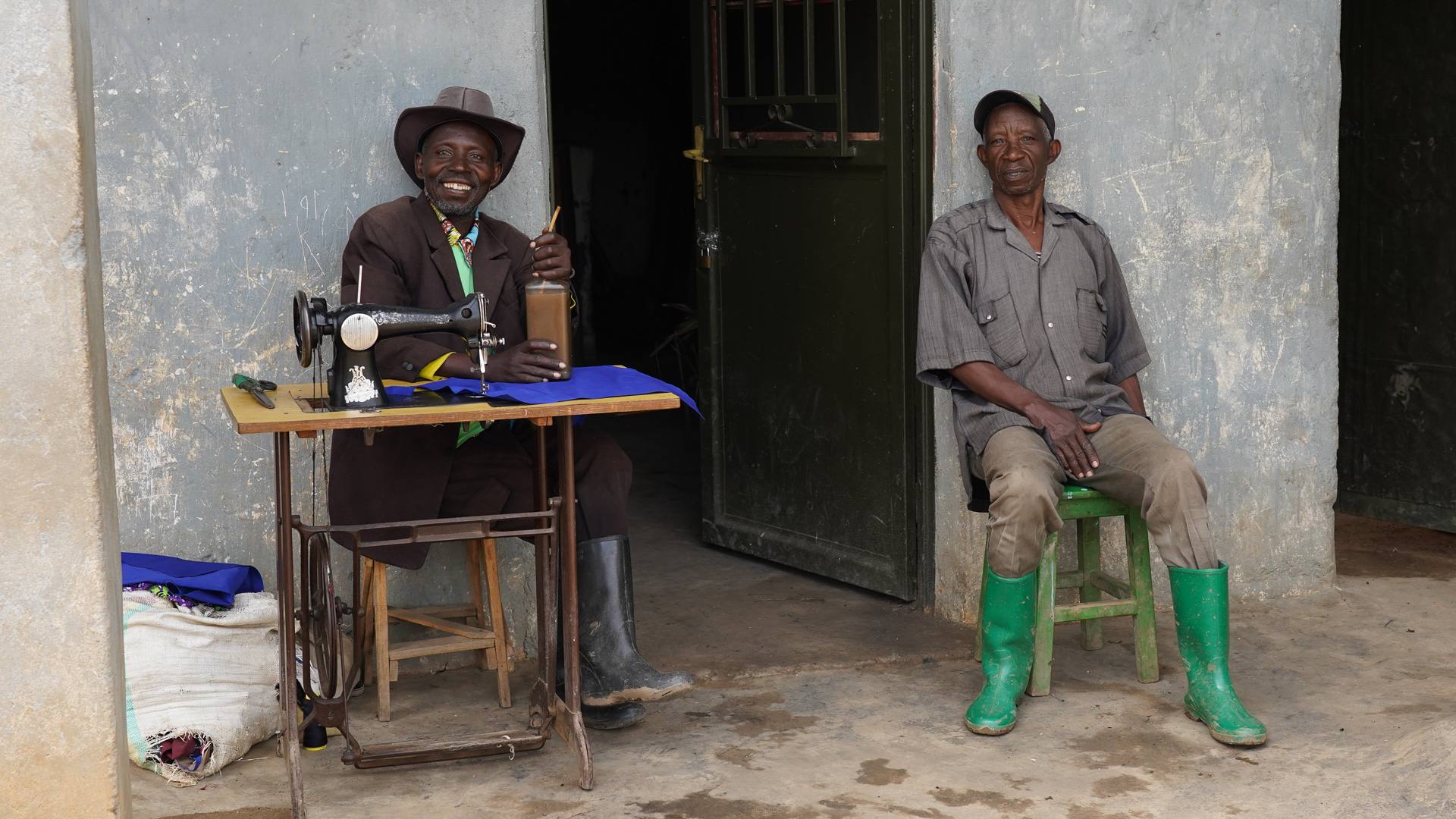
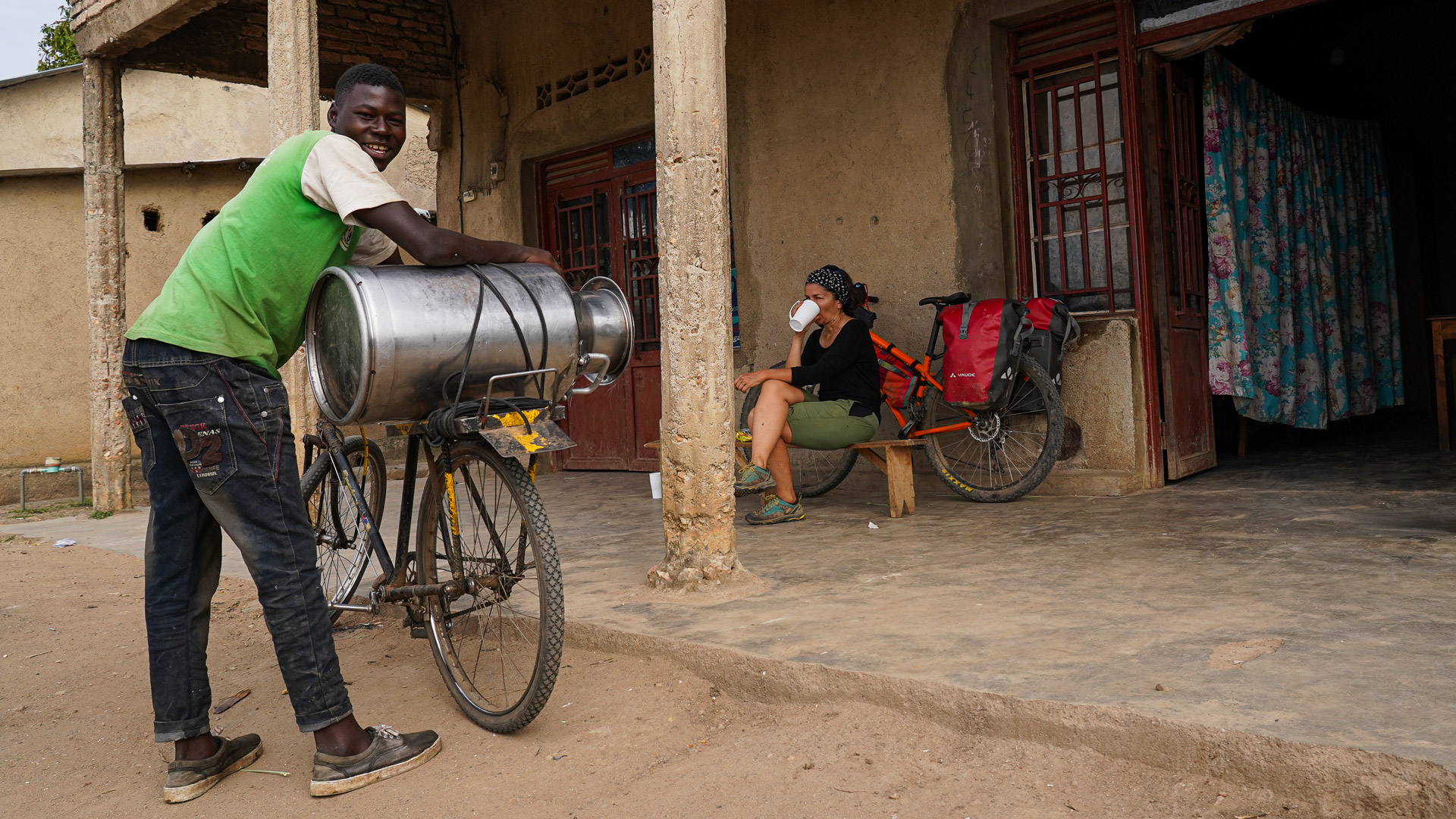
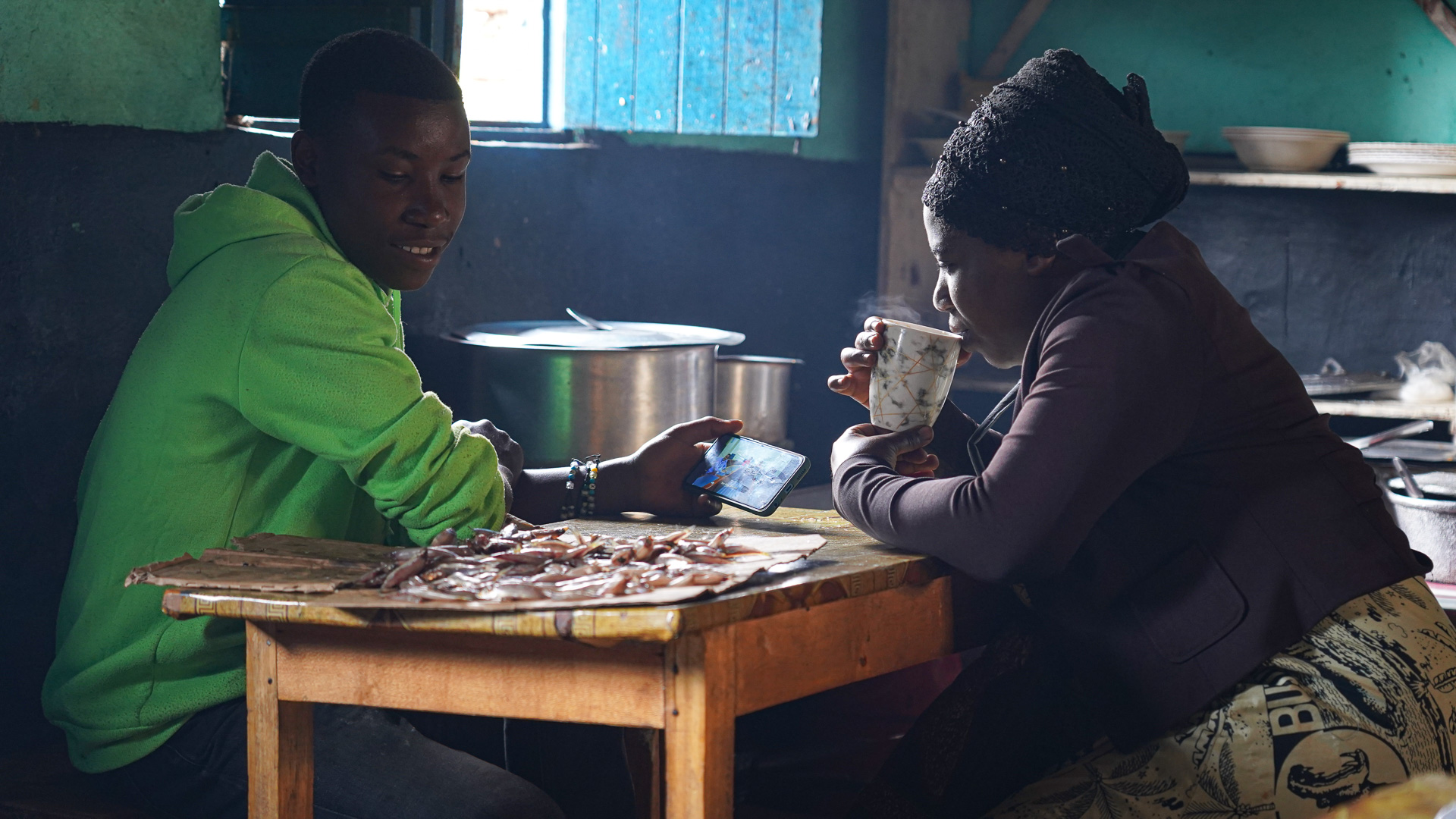
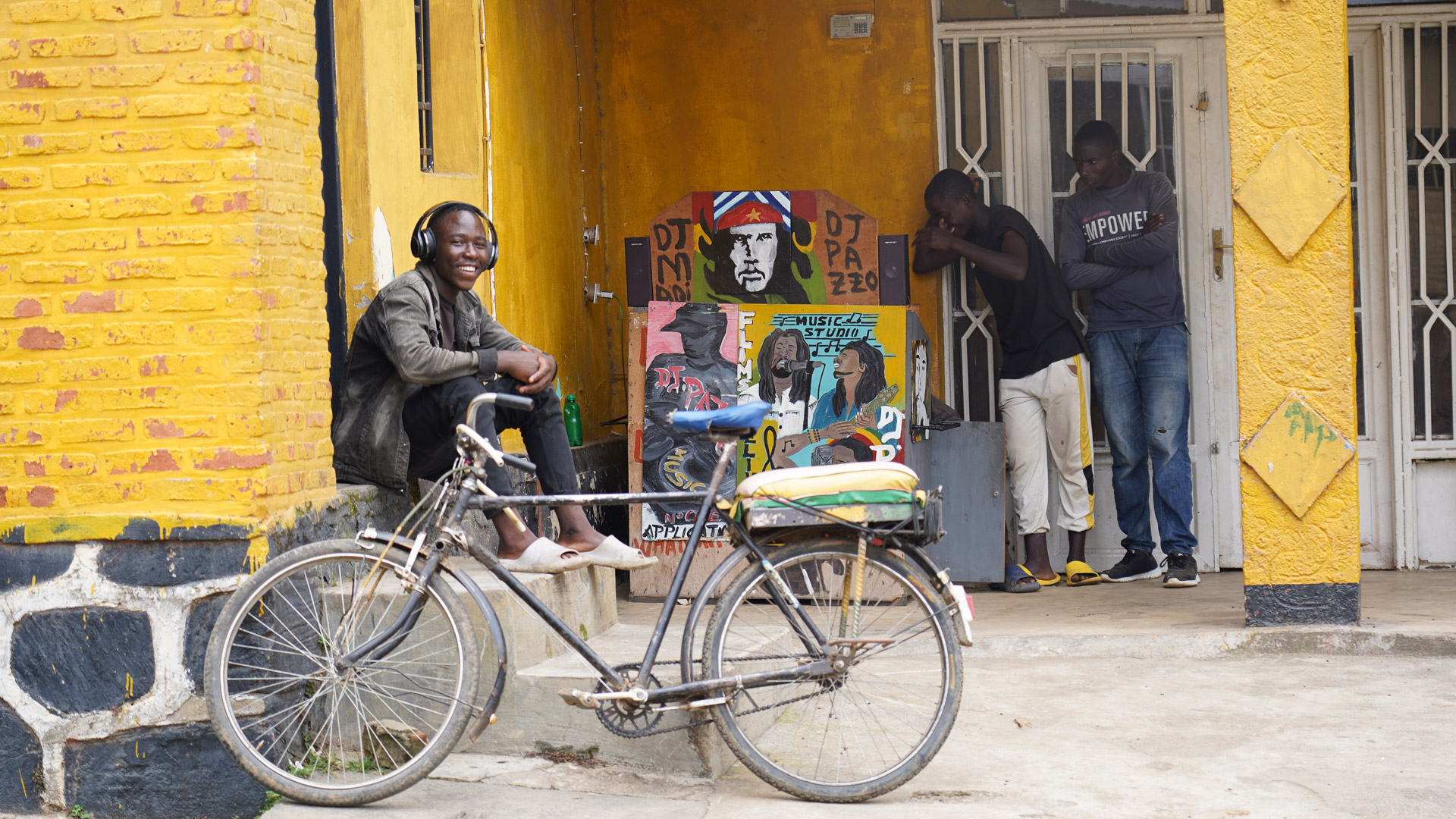
Birdlife...
The variety and beauty of the birds in Rwanda is exceptional. From the saddles of our bikes, during a break or at camp, the sight of them is as magical as it is fleeting. An immaculate white egret flying off to rest a little further along the path beside Lake Ruhondo, an ibis, an egret and a kite, motionless like statues next to each other. Near the banks of the lake, buzzards and kites fly over the crops, watching for distracted rodents, while ducks skim the water in squadrons.
At breakfast one morning black-headed yellow weaverbirds and shimmering Souimanga came to rest on the soft branches of nearby sugar canes. A flock of black-crowned waxbill, delicately powdered with pink, made a stop in a nearby cactus. And we were able to marvel at the elegant, very long tail of the dominican widowbird, recognizable by its bright red beak, which chose an electric wire as its perch. The dawn chorus is absolutely amazing…
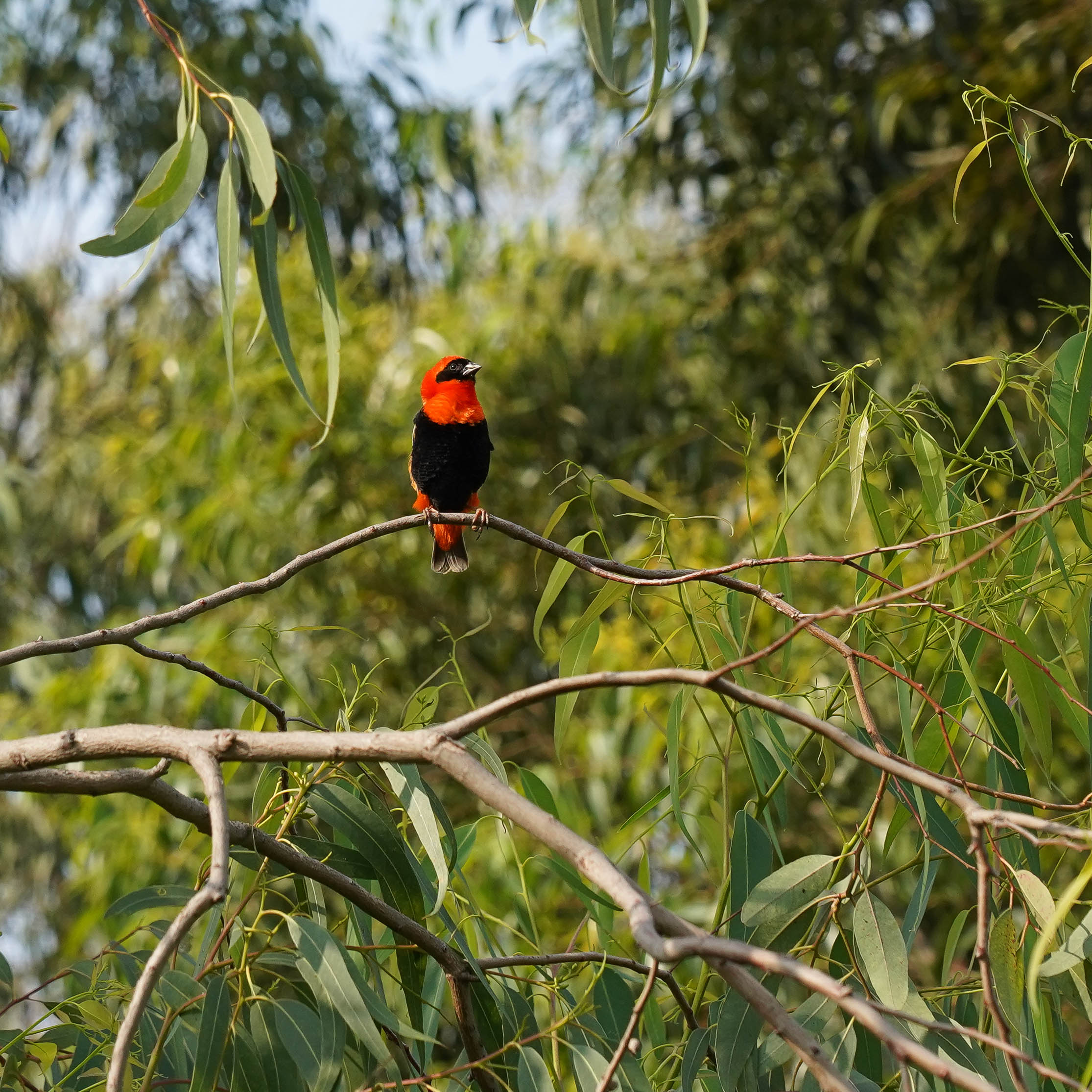
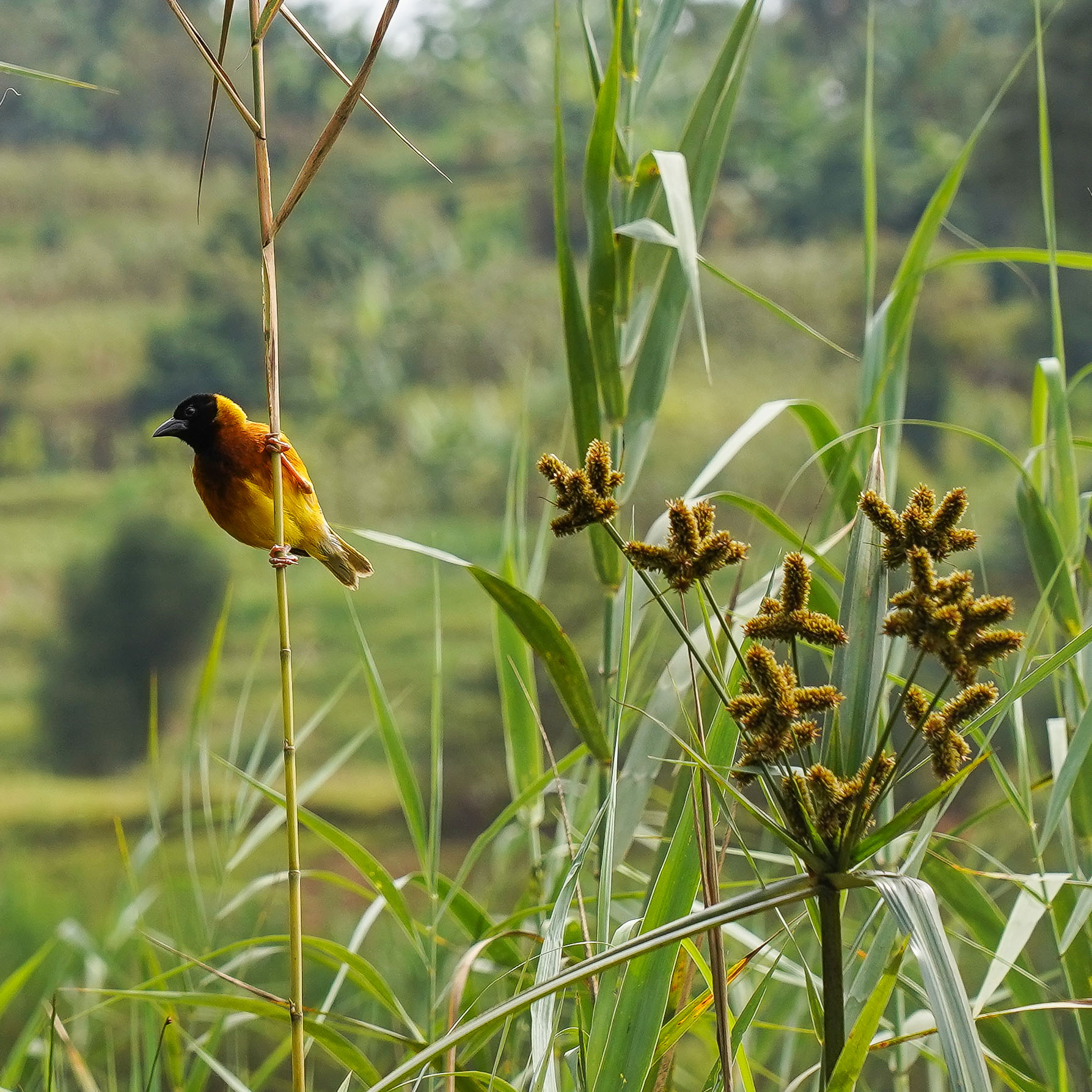
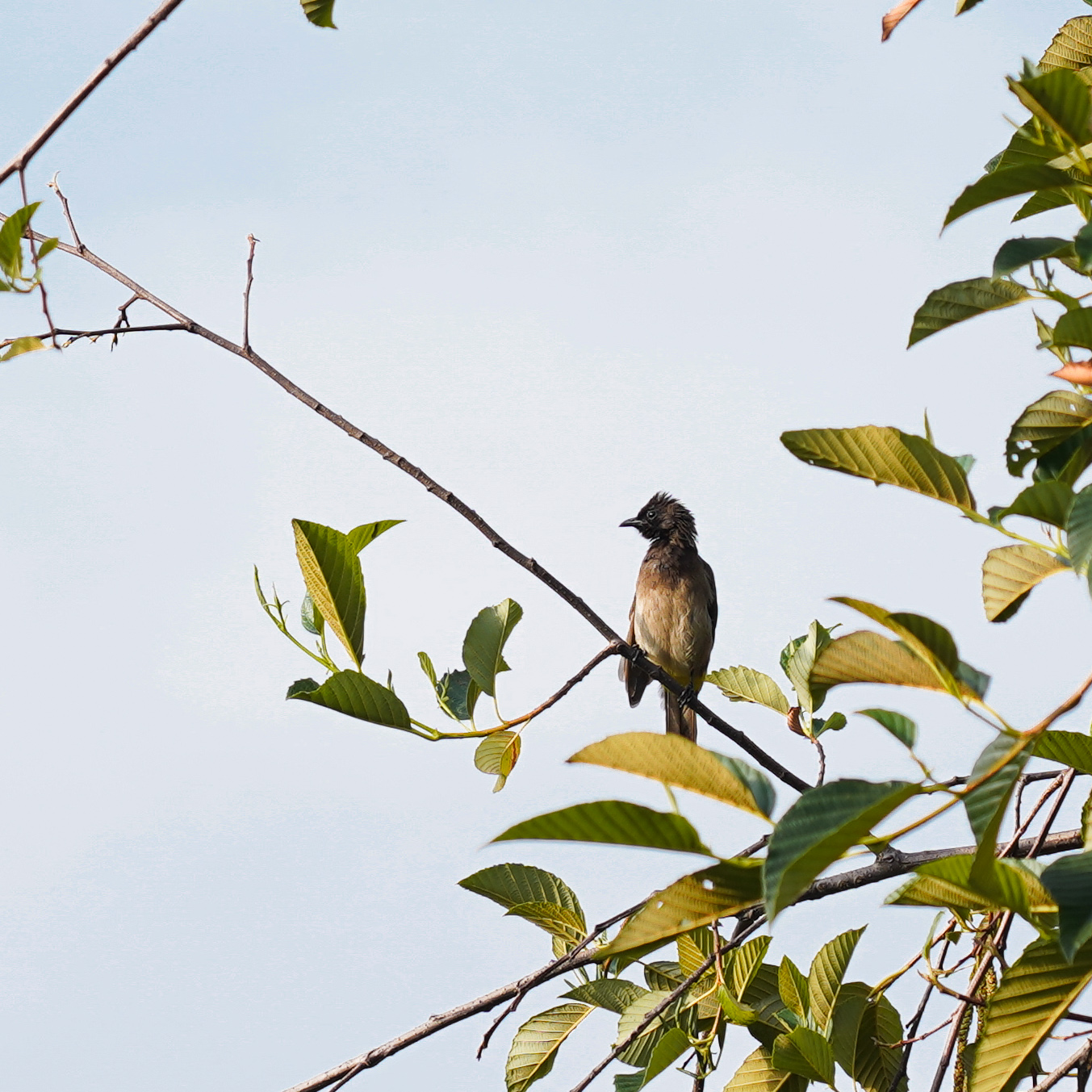
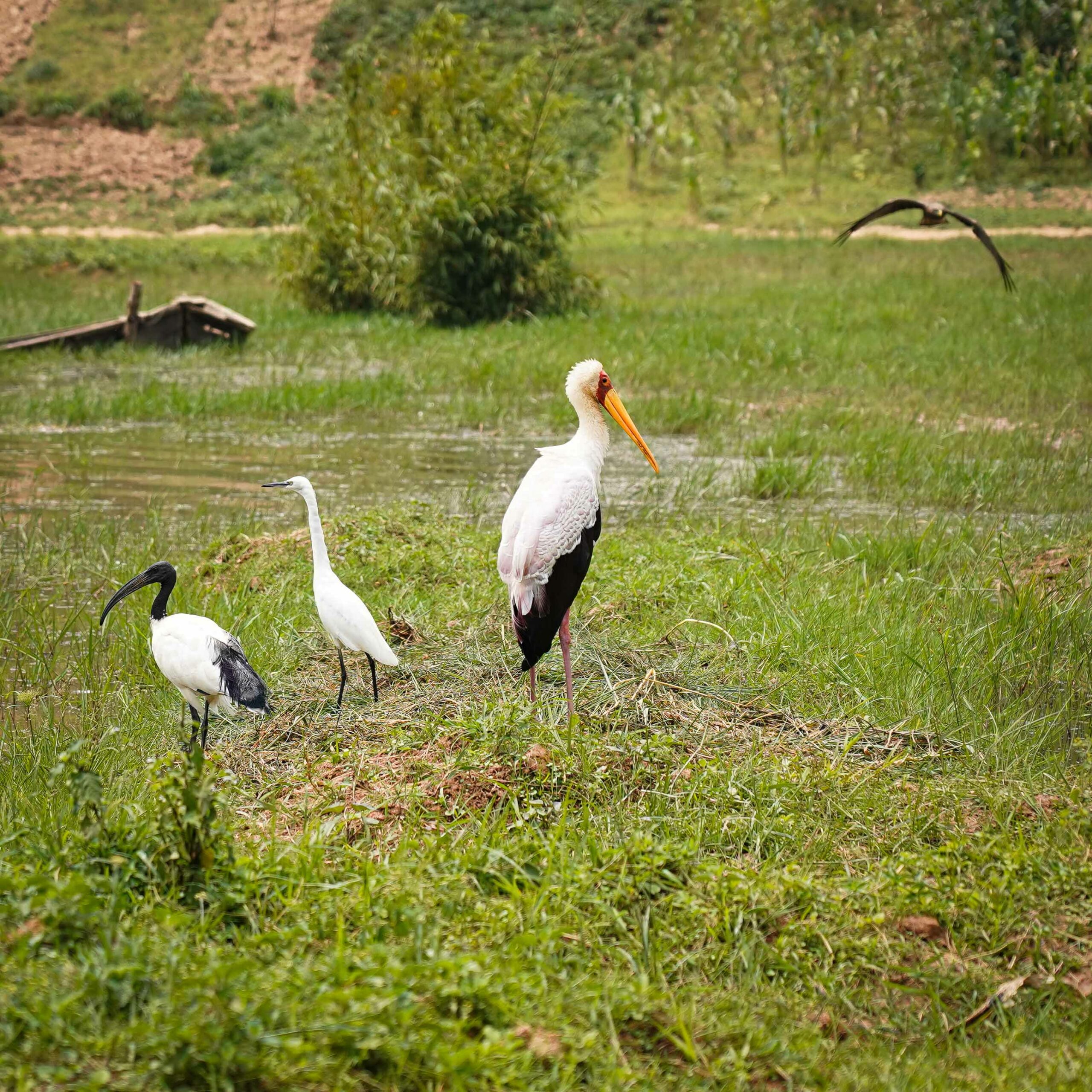
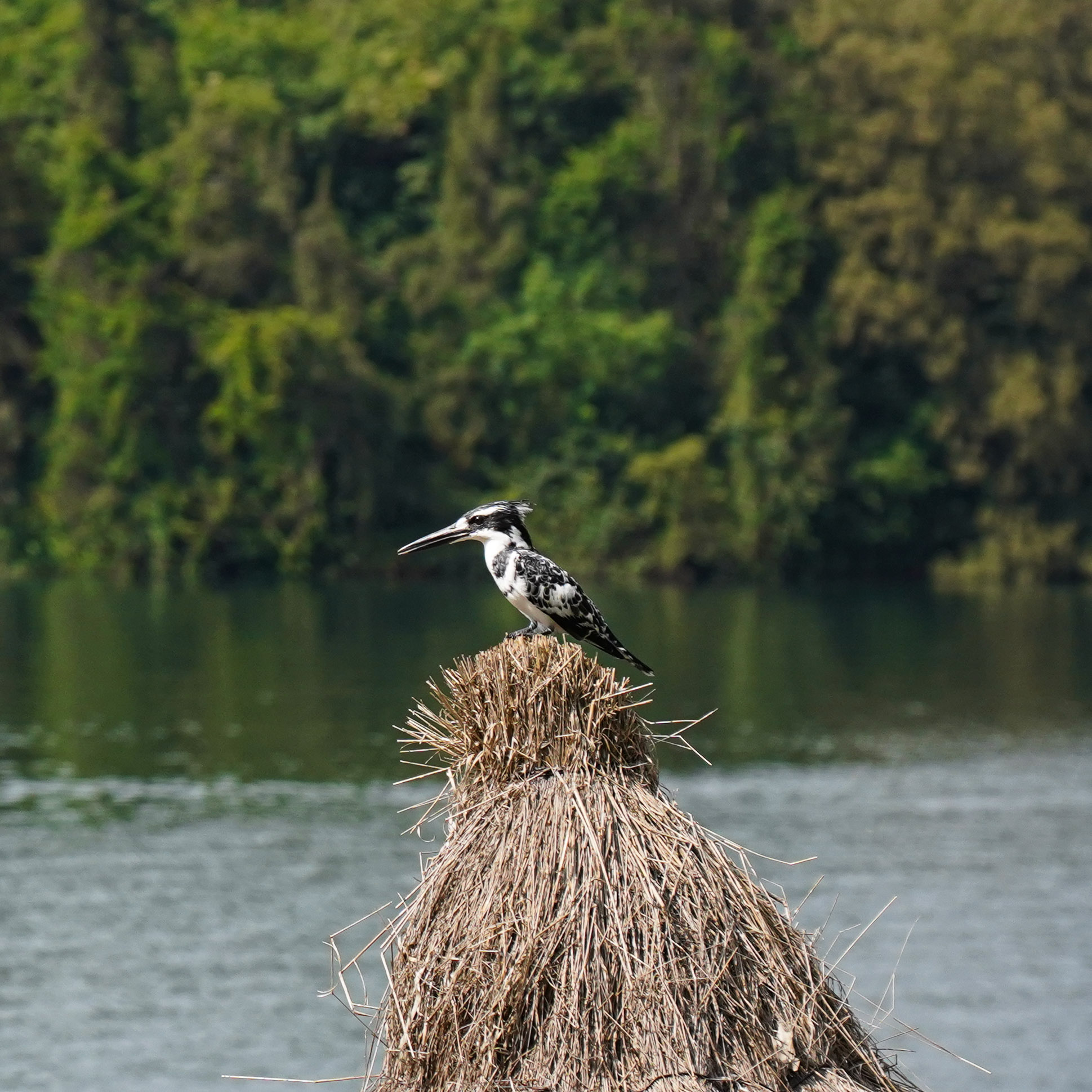
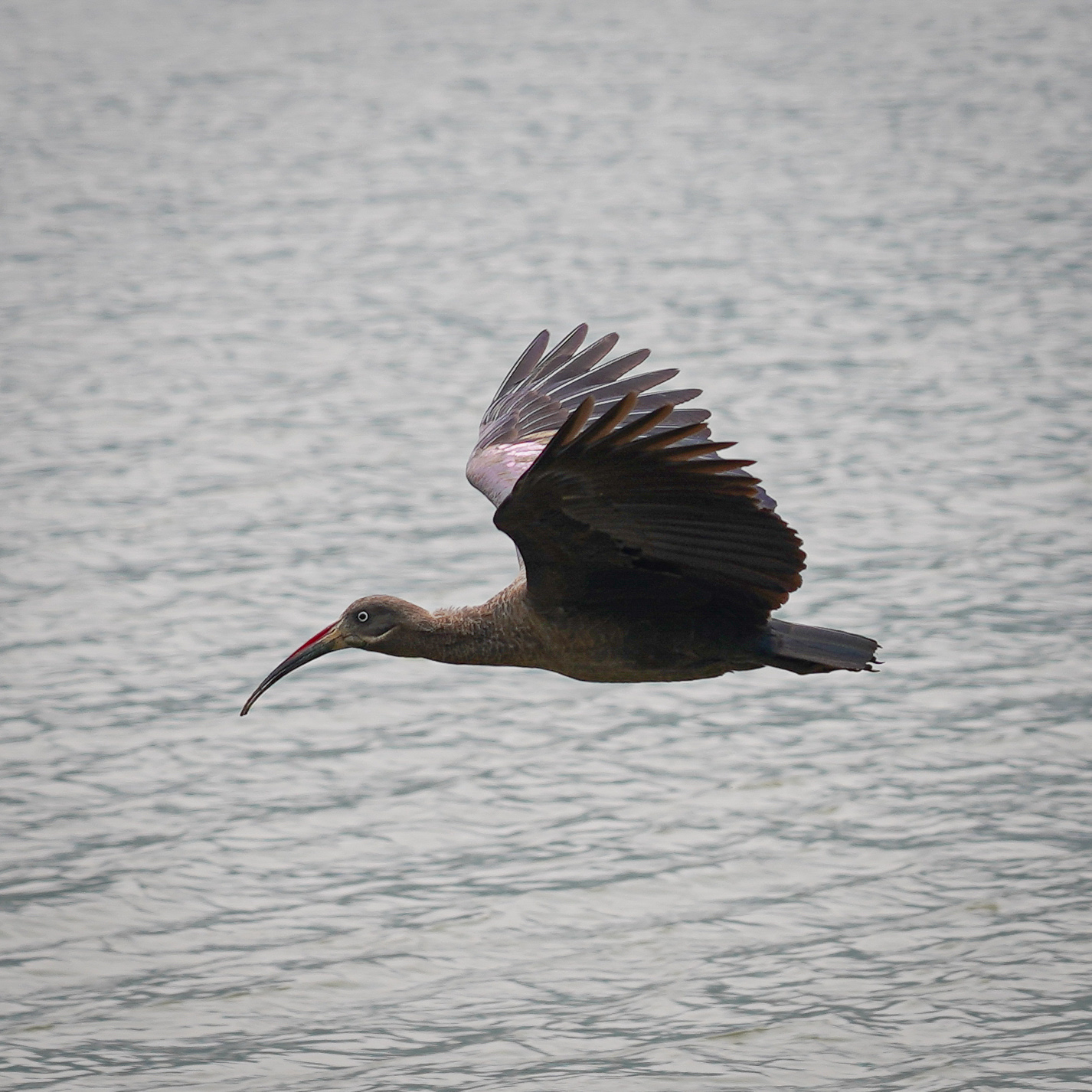
No Plastic
If there’s one truly striking feature about the country, it’s the cleanliness and absence of litter. Rwanda was the first African country to ban plastic bags, and did so some fifteen years ago. A motorcycle rider from Tanzania told us that he had to negotiate hard at the Rwandan customs checkpoint in order to keep a bin liner to protect his belongings in case of rain. Whether you’re in a supermarket or at a small country stall, shopping is packed in kraft paper bags. As a result the country is super clean! Which just goes to show that when there’s the political will to tackle an environmental issue, anything is possible!
Once a month, the umuganda takes place, involving a few hours of compulsory collective work. The measure was devised to bring the population together after the traumas of the genocide.
Nyungwé old-growth forest
In south-western Rwanda, lies the impressive Nyungwé Forest. Extending into neighbouring Burundi, it is protected in both territories by national parks. It is said to be one of the best-preserved forests in Africa, home to an incredible biodiversity. A mountain forest, rising to an altitude of 2950 metres, Nyungwé is home to the watersheds of the two largest rivers on the African continent, the Congo and the Nile. It receives 2,000 mm of rain per year and plays a decisive role in regulating Rwanda’s climate.
We cycled the only road that crosses the park from one side to the other, some sixty paved kilometers through magnificent scenery.
We had to get used to a large military presence throughout the park. This is in order to protect goods trucks from Burundi pirates. After this surprising discovery, we were able to enjoy the stunning landscapes, tall trees shrouded in the mist. Numerous monkeys stay close to the road, on the look out for grain falling from passing trucks: we observed families of baboons, but also pretty black and white colobus monkeys, and even briefly saw 3 chimpanzees cross the road.
On several occasions, small duiker antelopes stopped when they saw us, only fleeing when we came within a few metres of them.
The mountain forest of Nyungwé National Park is home to:
– 13 species of monkey, including the chimpanzee
– over 300 bird species, 30 of which are endemic to the region
– almost 1070 plant species and 140 types of orchid
– 120 species of butterfly
Lake Kivu
Lake Kivu in the west of the country is almost 90 km long and 50 km wide. It’s a veritable inland sea. The typically foggy weather means you can rarely make out the shores of the neighbouring Republic of Congo or even those of the large Congolese island of Idjwi, which occupies the central part. The shoreline is very jagged, forming peninsulas and numerous coves. Many islets are dotted around the lake, sometimes farmed but never inhabited. At dusk the lake is full of fishermen and their large outrigger boats. The boats are propelled by rowers (no engines here!) making for a particularly peaceful atmosphere. On several occasions, we saw otters playing at the end of the day.
Lake Kivu contains large pockets of methane gas trapped in its deep waters. For this reason there are no crocodiles or other dangerous animals, making swimming here safe, quiet and pleasant. Methane extraction offers an infinite energy resource for Rwanda.
Land of the bicycle
Rwanda is a nation of cyclists. On a day-to-day basis, the country’s challenging terrain doesn’t dampen the spirits of those who get around, and you’ll come across countless taxi bikes carrying schoolchildren or villagers, and even more bikes heavily laden with goods. As bike travelers, you feel completely in tune with the rhythm of the country, with numerous friendly encounters with local cyclists!
The Rwandan government, in search of national unity after the genocide, encouraged sport in general and supported cycling by organizing competitions. The Tour of Rwanda rapidly outgrew its regional influence to become the number 1 cycling competition on the African continent, and is now an internationally renowned race. The country is a breeding ground for young cyclists, especially climbers, with the local mountains offering a formidable training ground. A training center, the Africa Rising Cycle Center, has been set up in Musanze and is home to Rwanda’s national cycling team.
Other cycle races take place in Rwanda, such as the Rwandan Epic, a mountain bike race attracting international competitors, and the Race around Rwanda bikepacking race.
A few tips for cycling in Rwanda:
– free visas on arrival for French, Belgian and Swiss nationals (valid for 30 days).
– dry seasons: January to mid-February and June to late August.
– tourist accommodation is fairly expensive, but camping is possible in the gardens of guest-houses.
– the Congo Nile Trail is a signposted cycling itinerary overlooking Lake Kivu, following a network of trails from village to village. Over 220 km in length, with a fair amount of climbing.
– plenty of opportunities for refuelling: there are small grocery stores in most villages.
– no safety issues, you’ll be welcomed everywhere!
Find out more:
– read our Rwanda: Slaves to the bicycle article
– Congo Nile Trail on bikepacking.com

